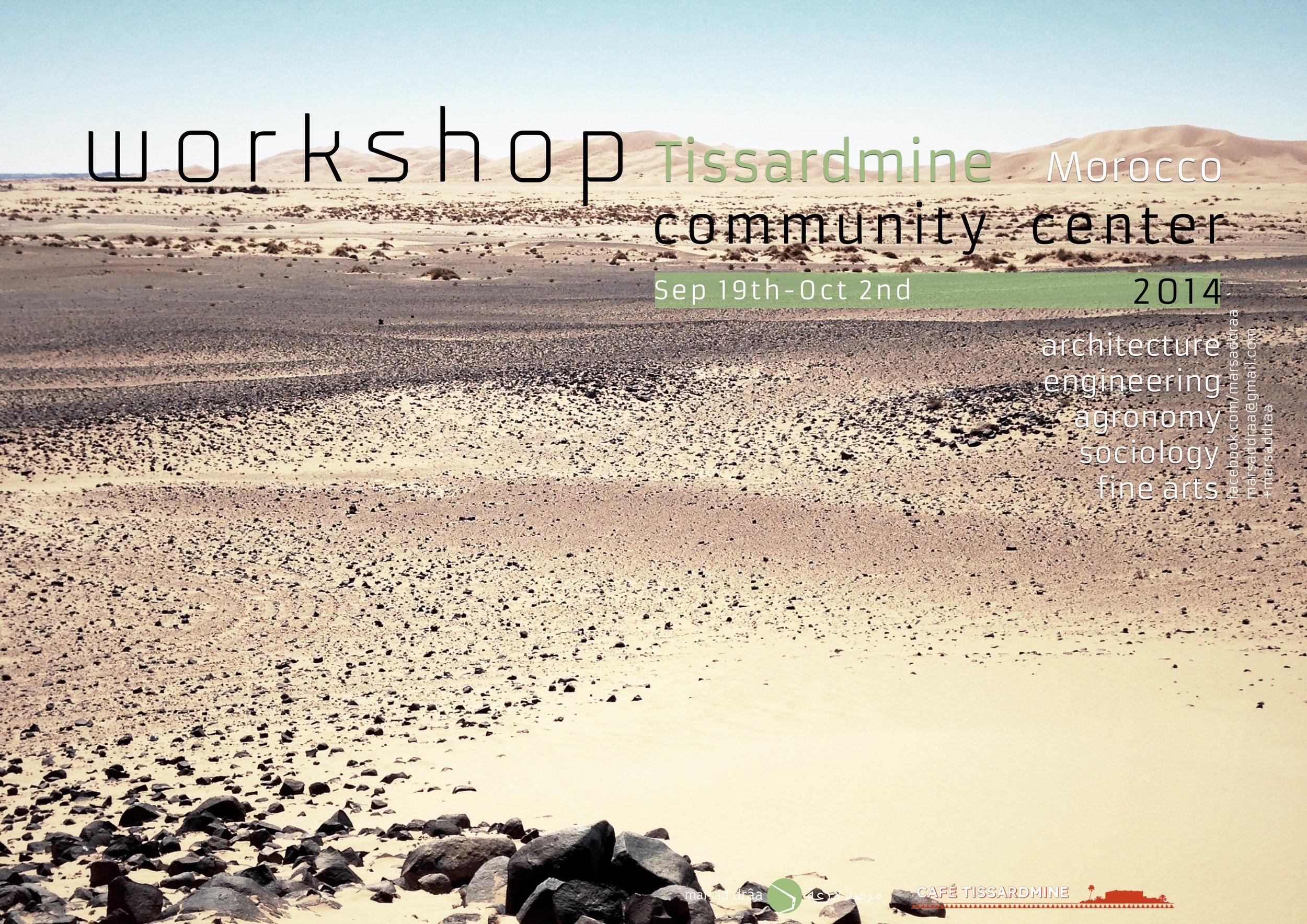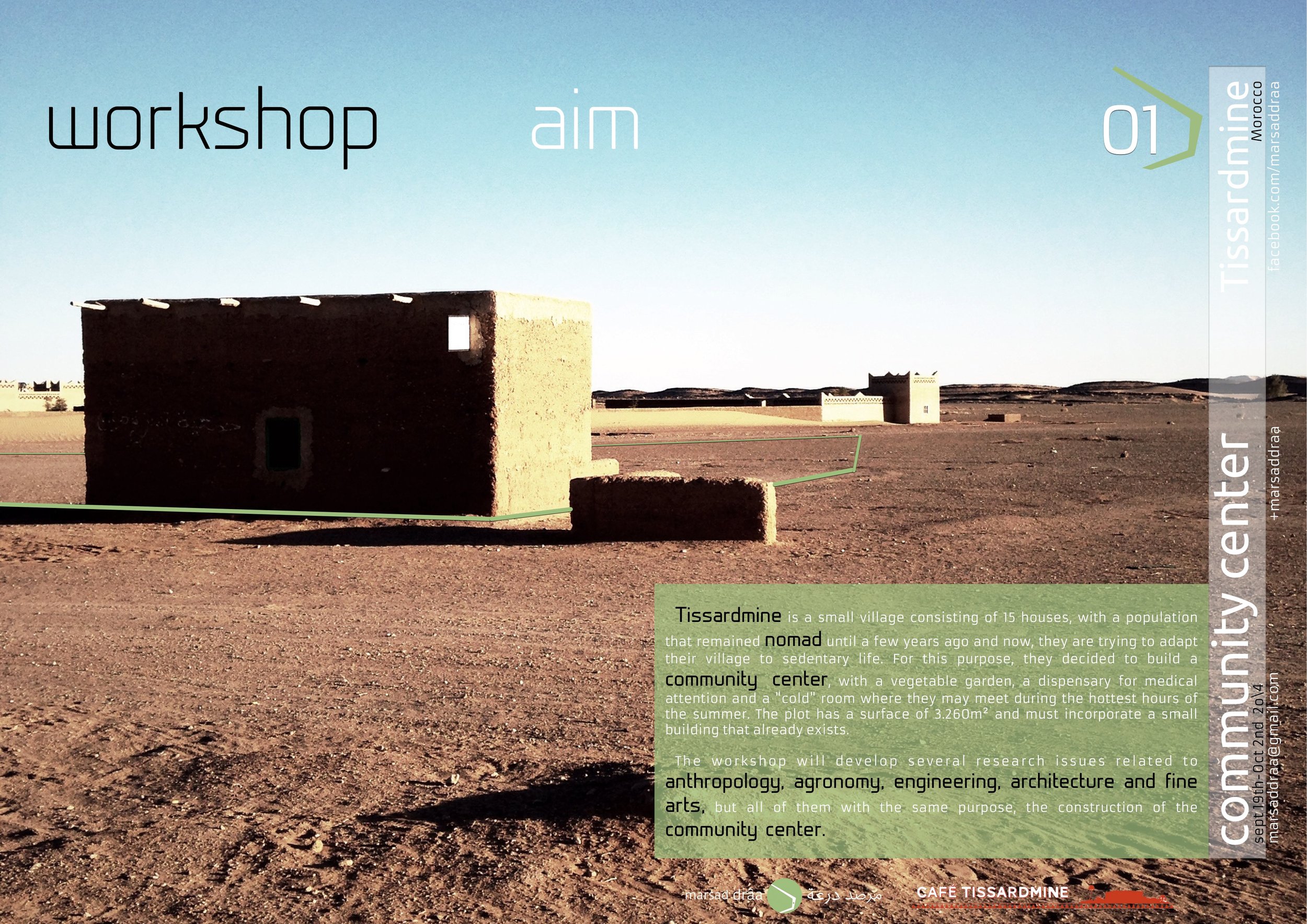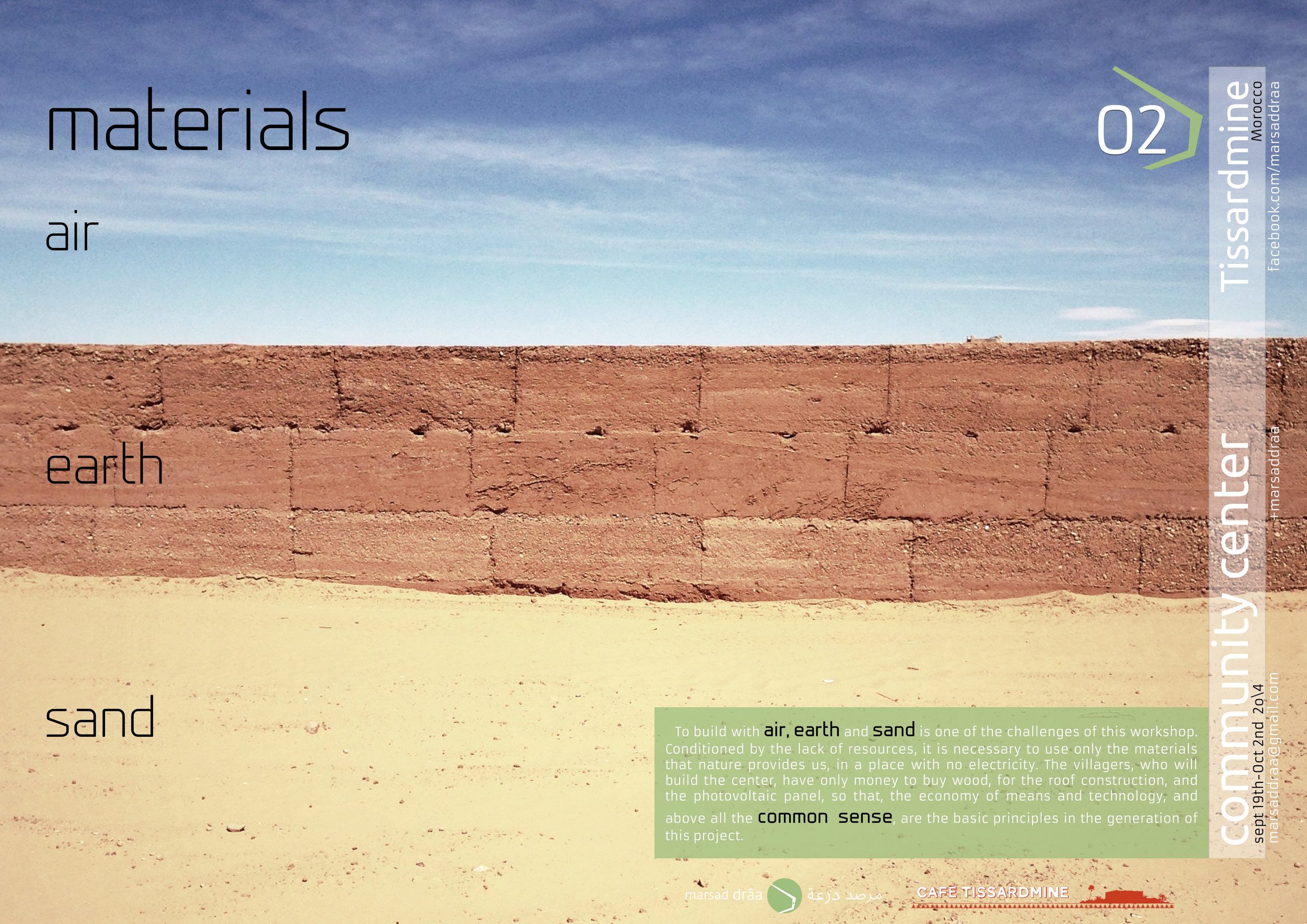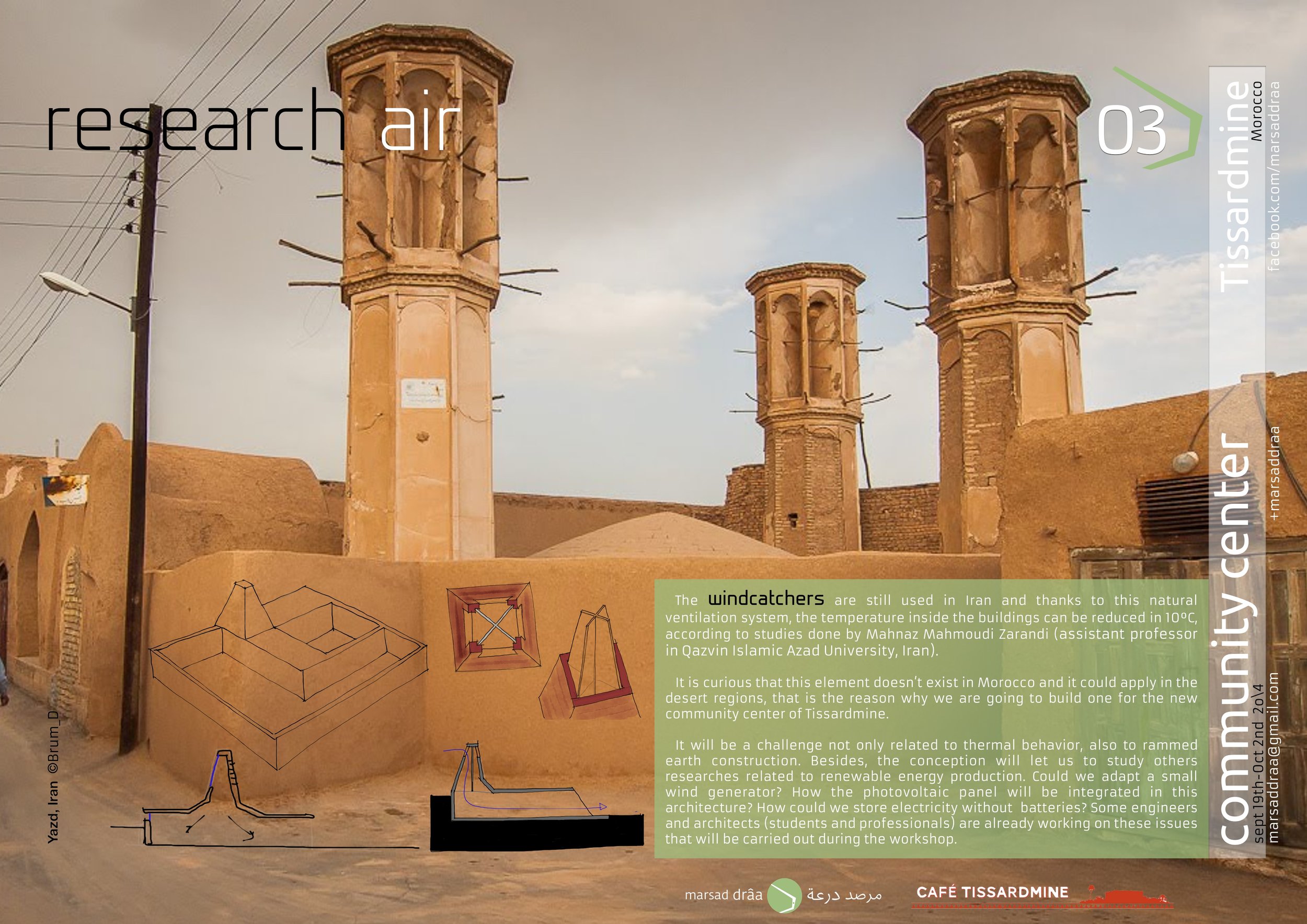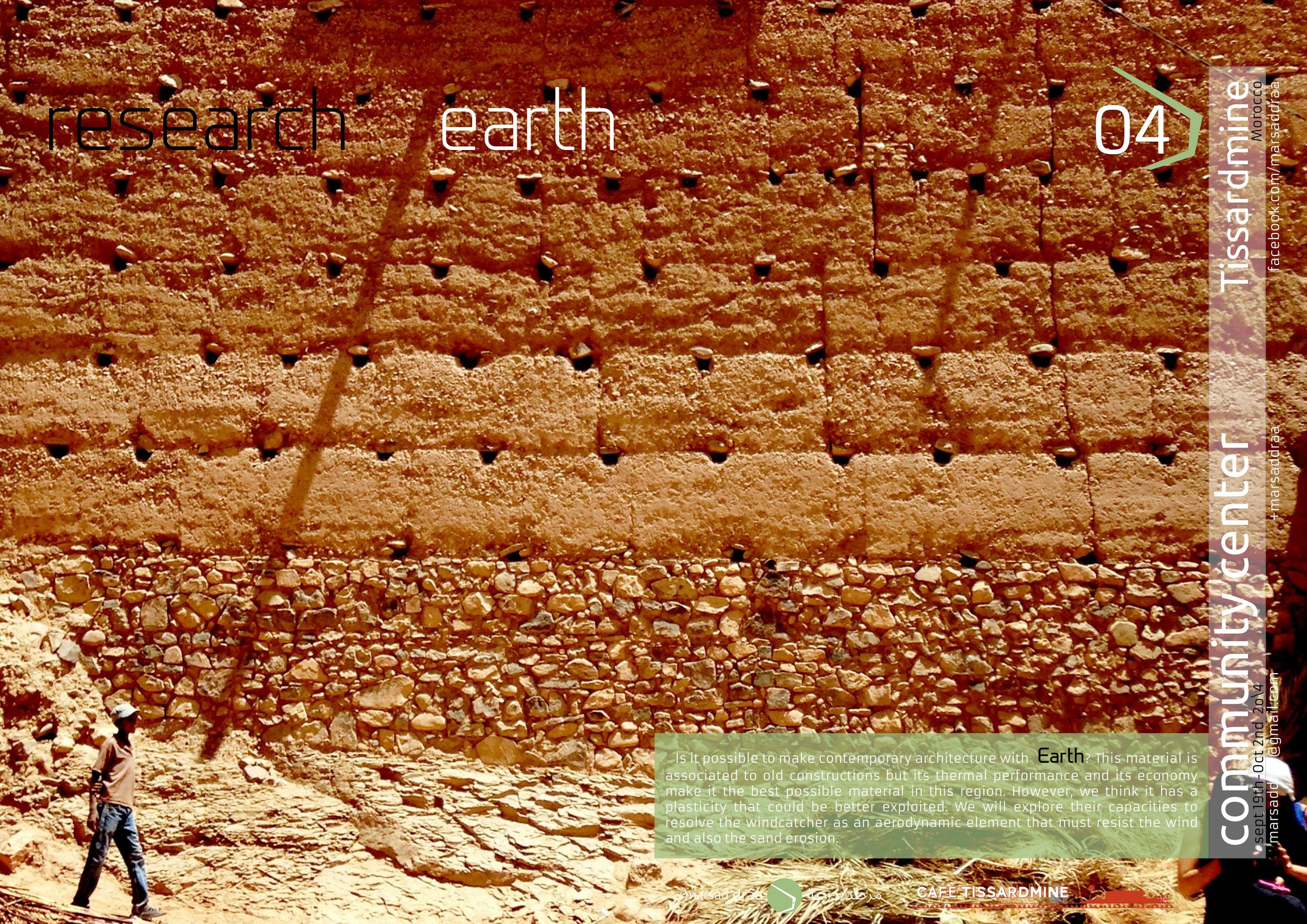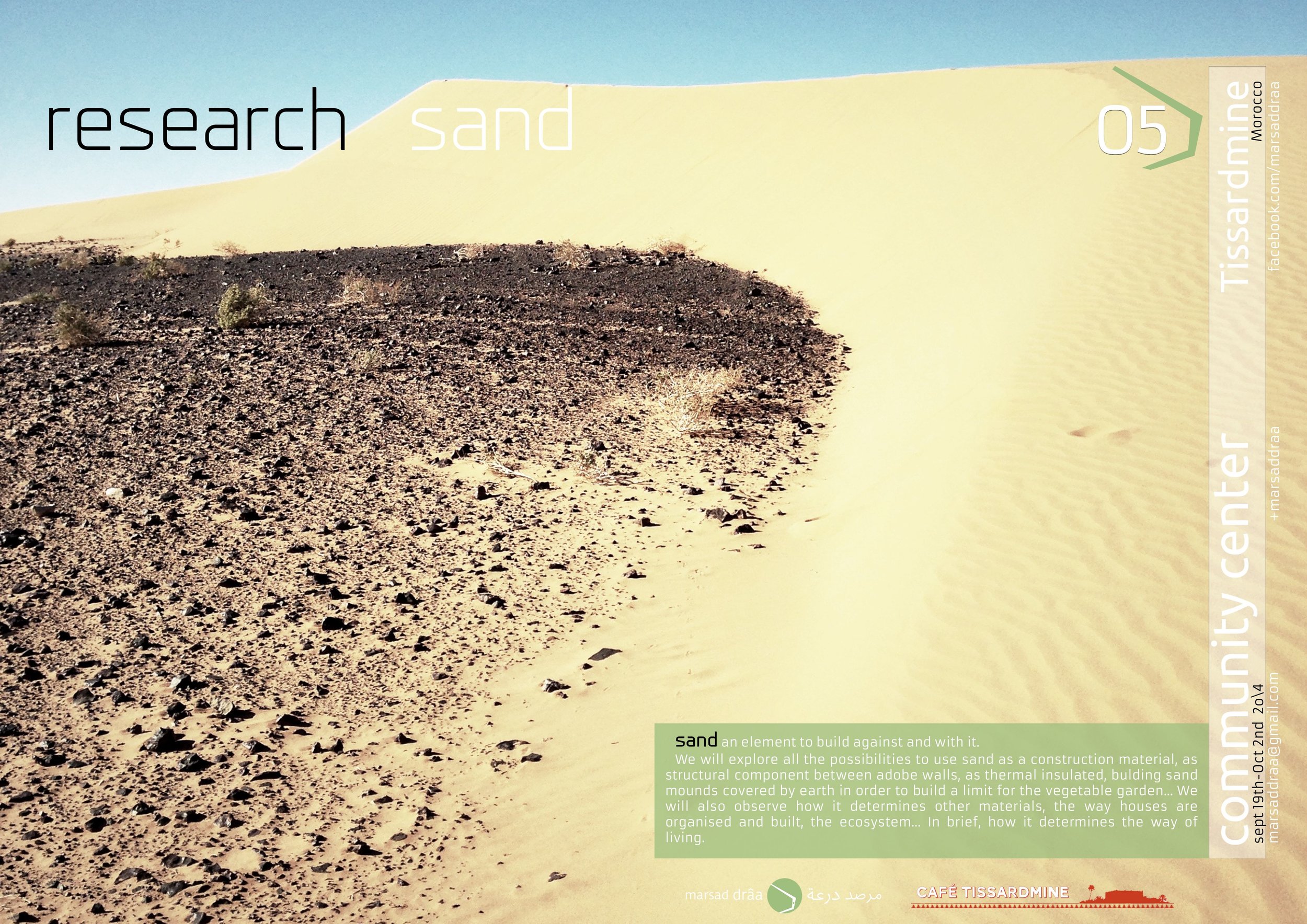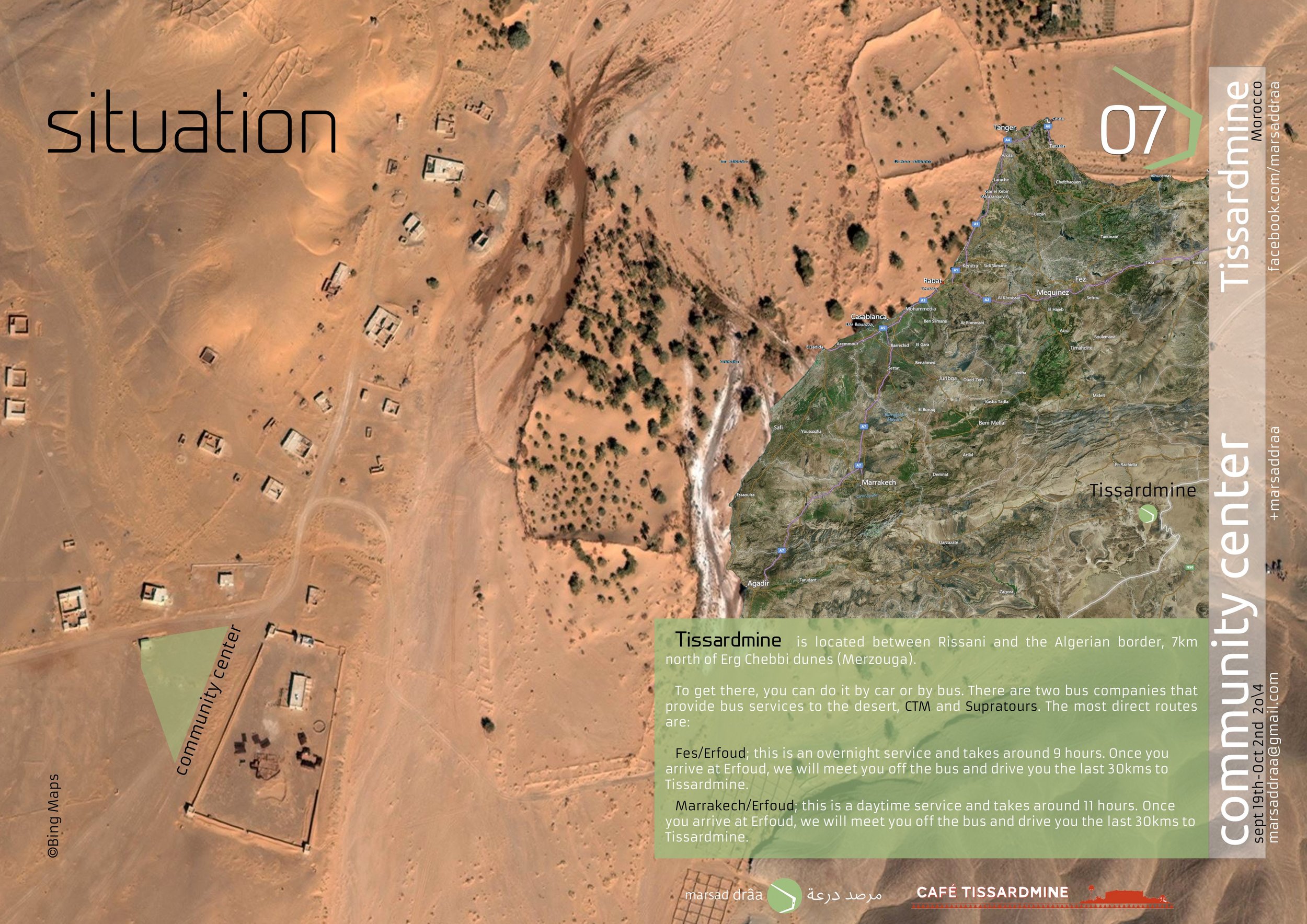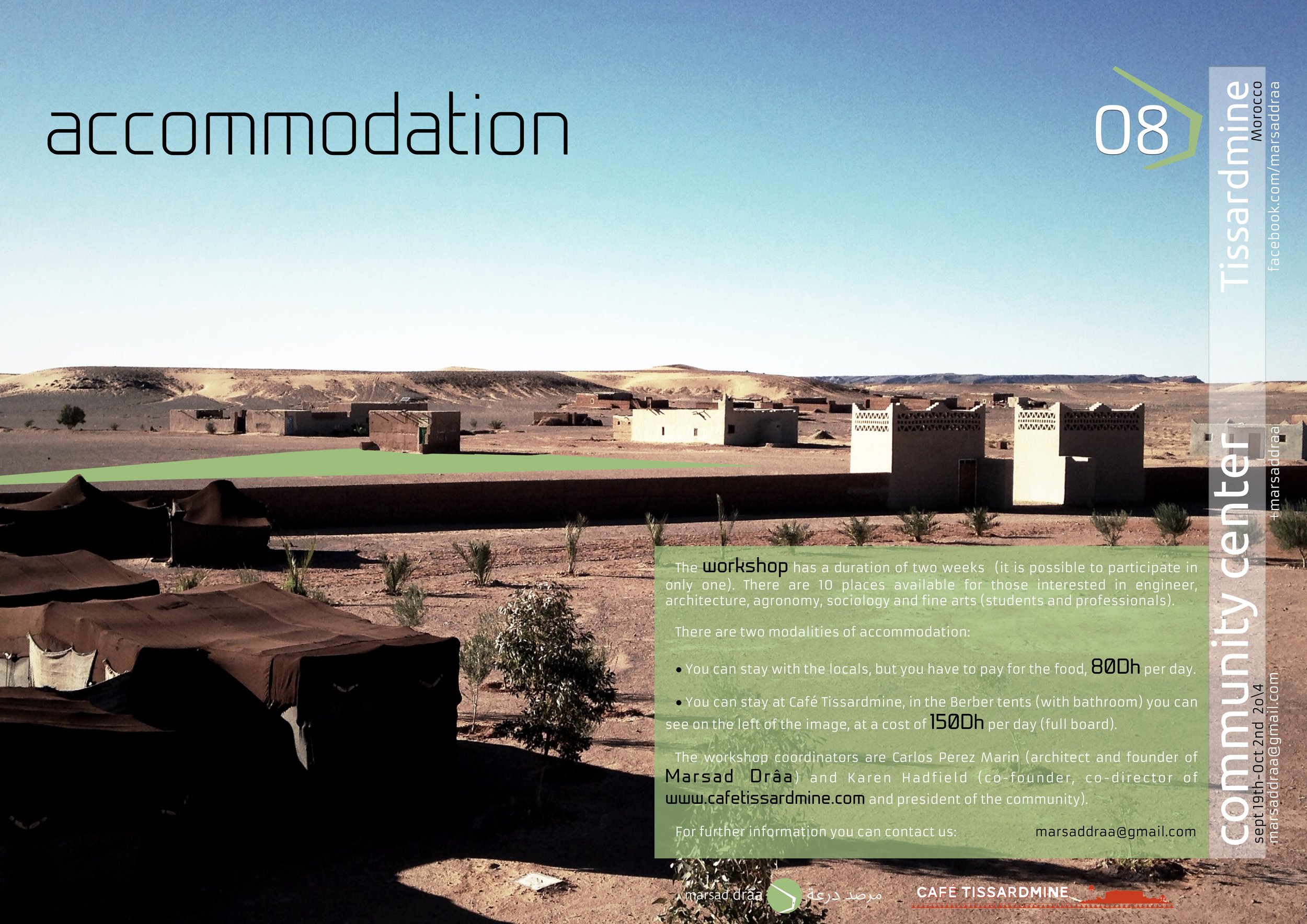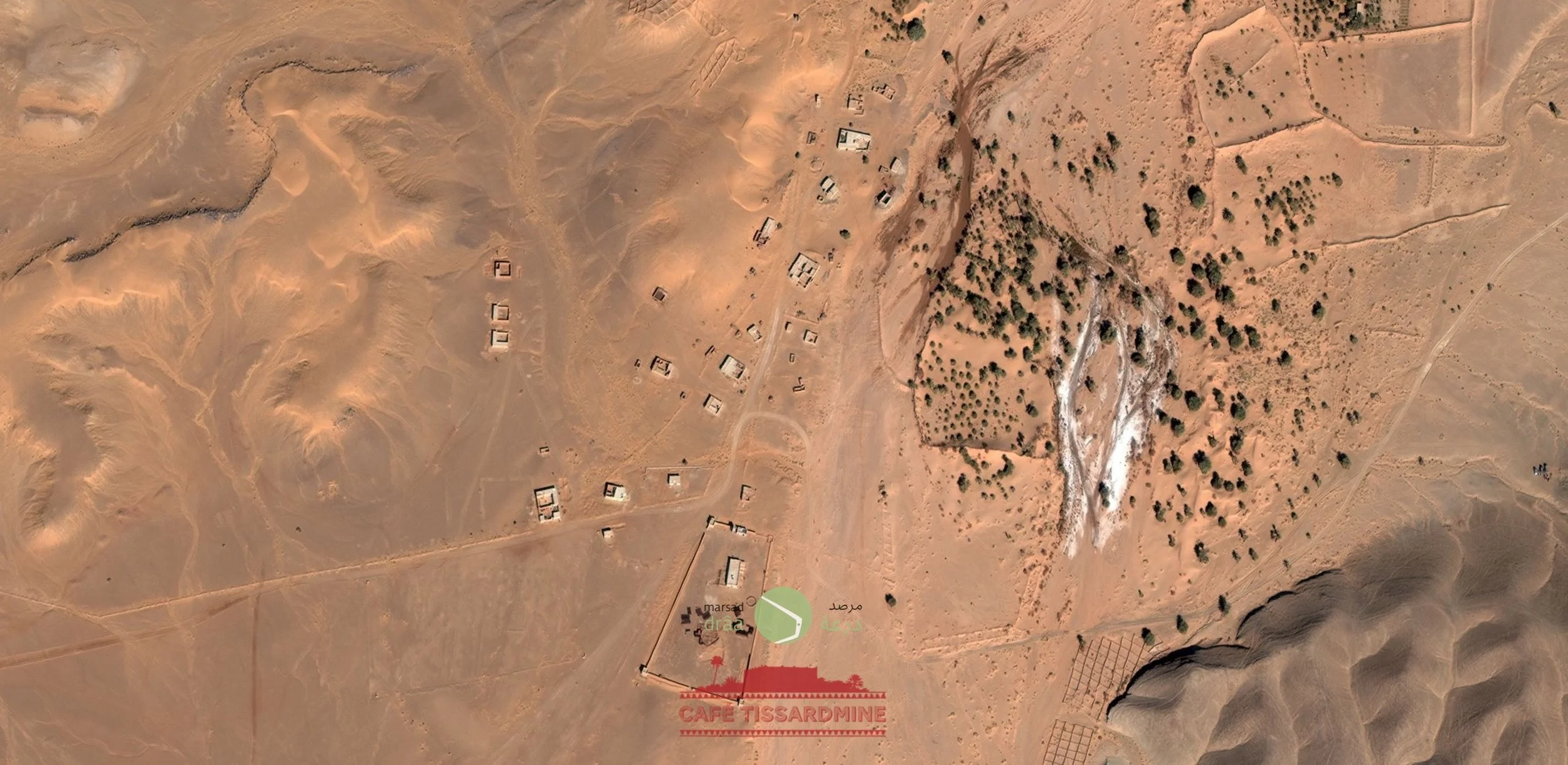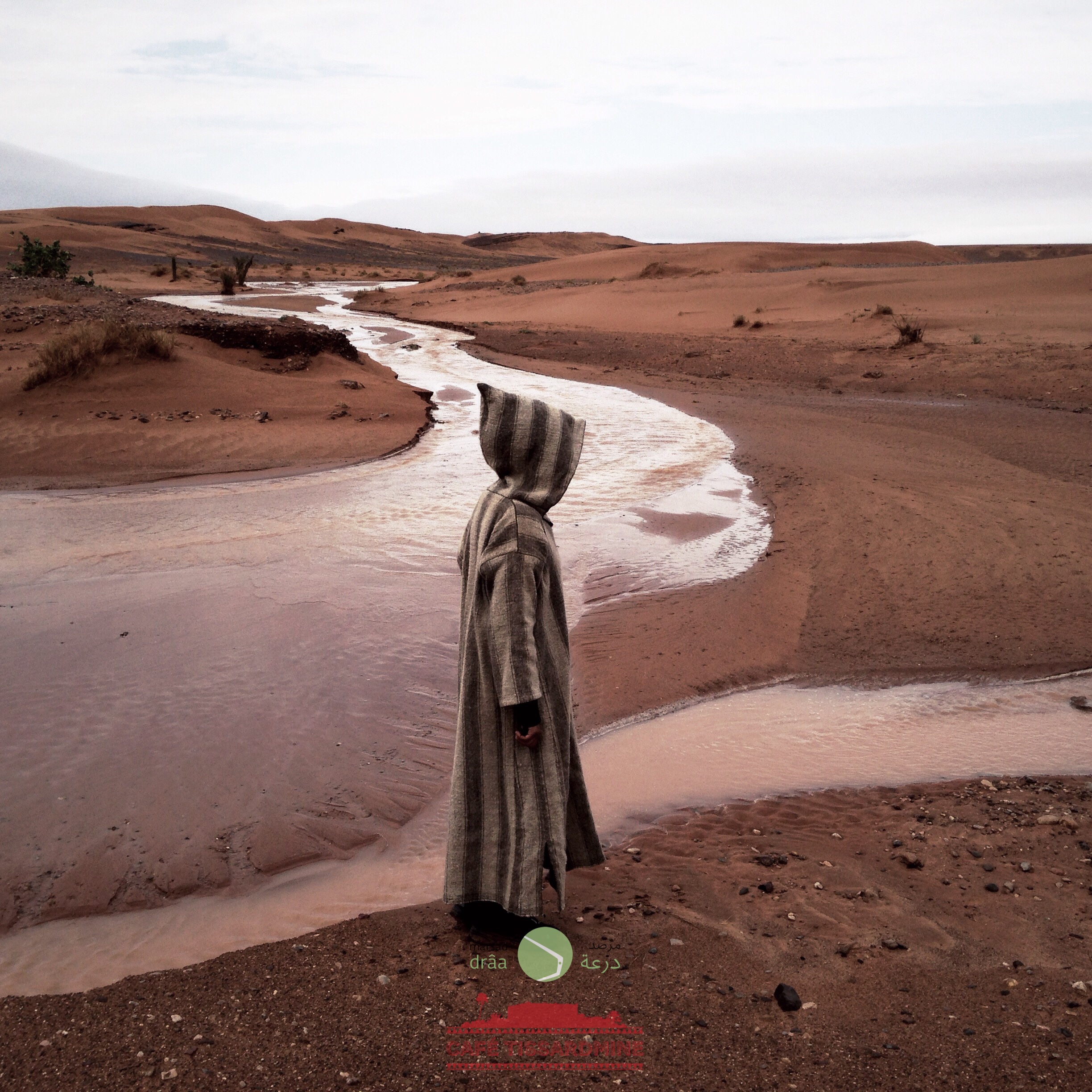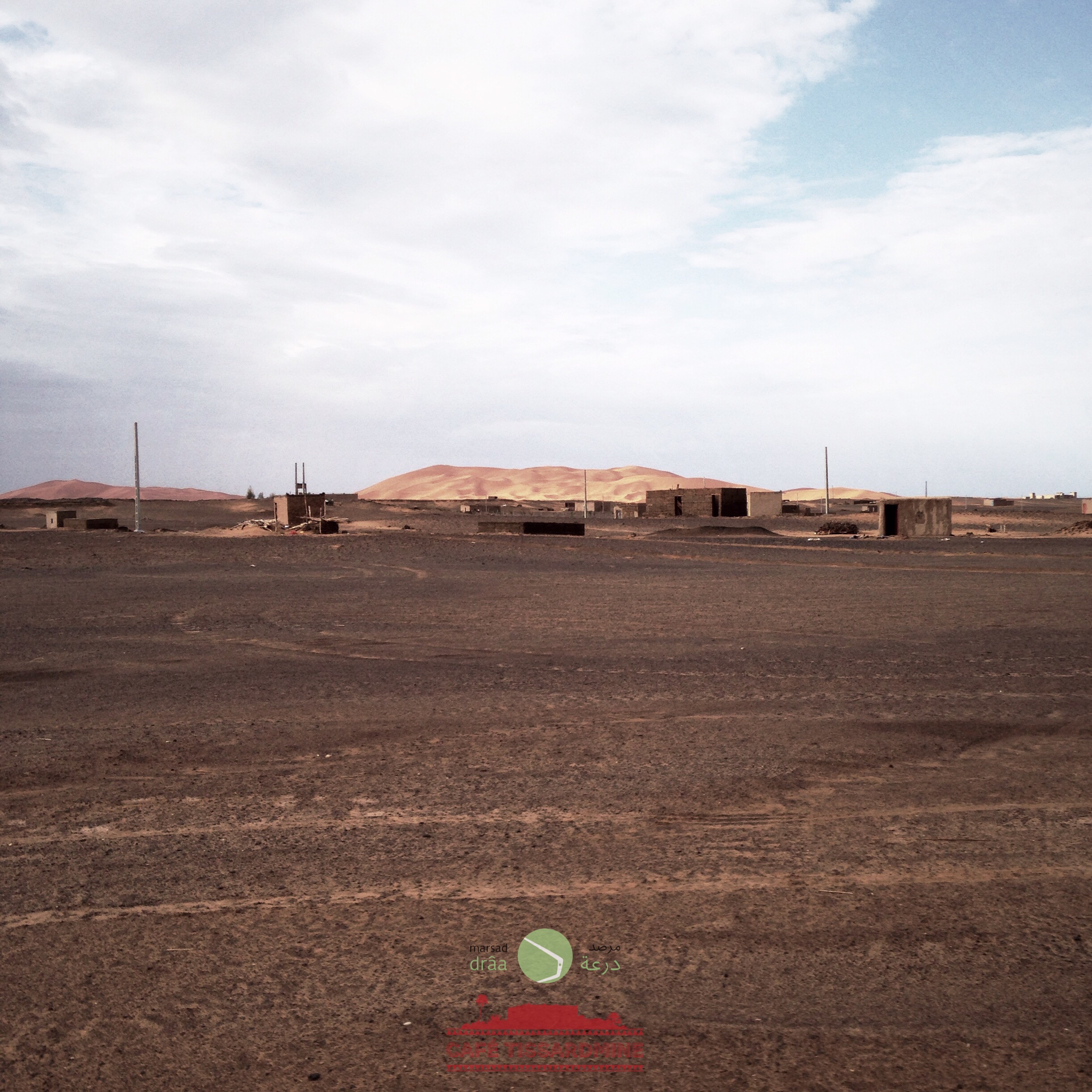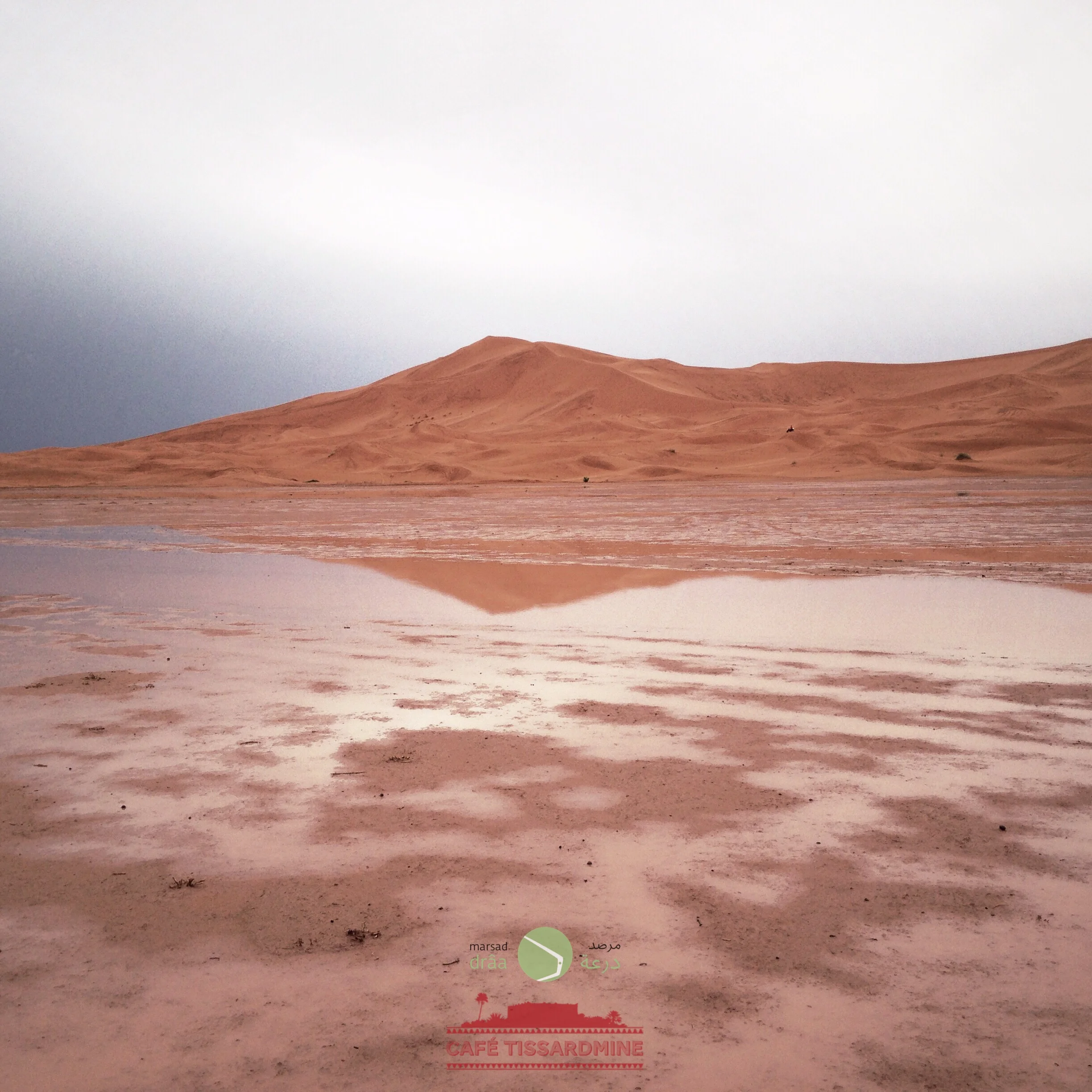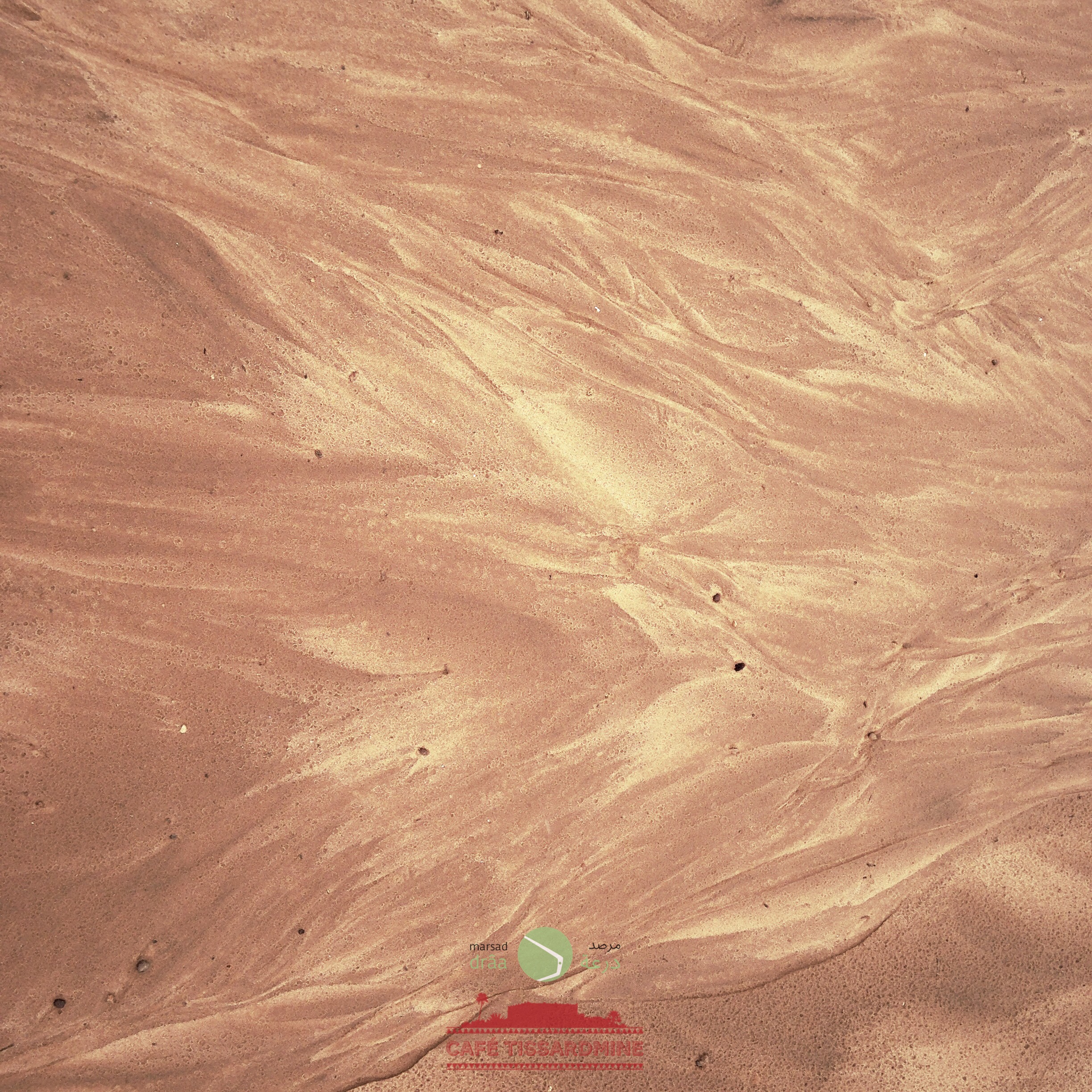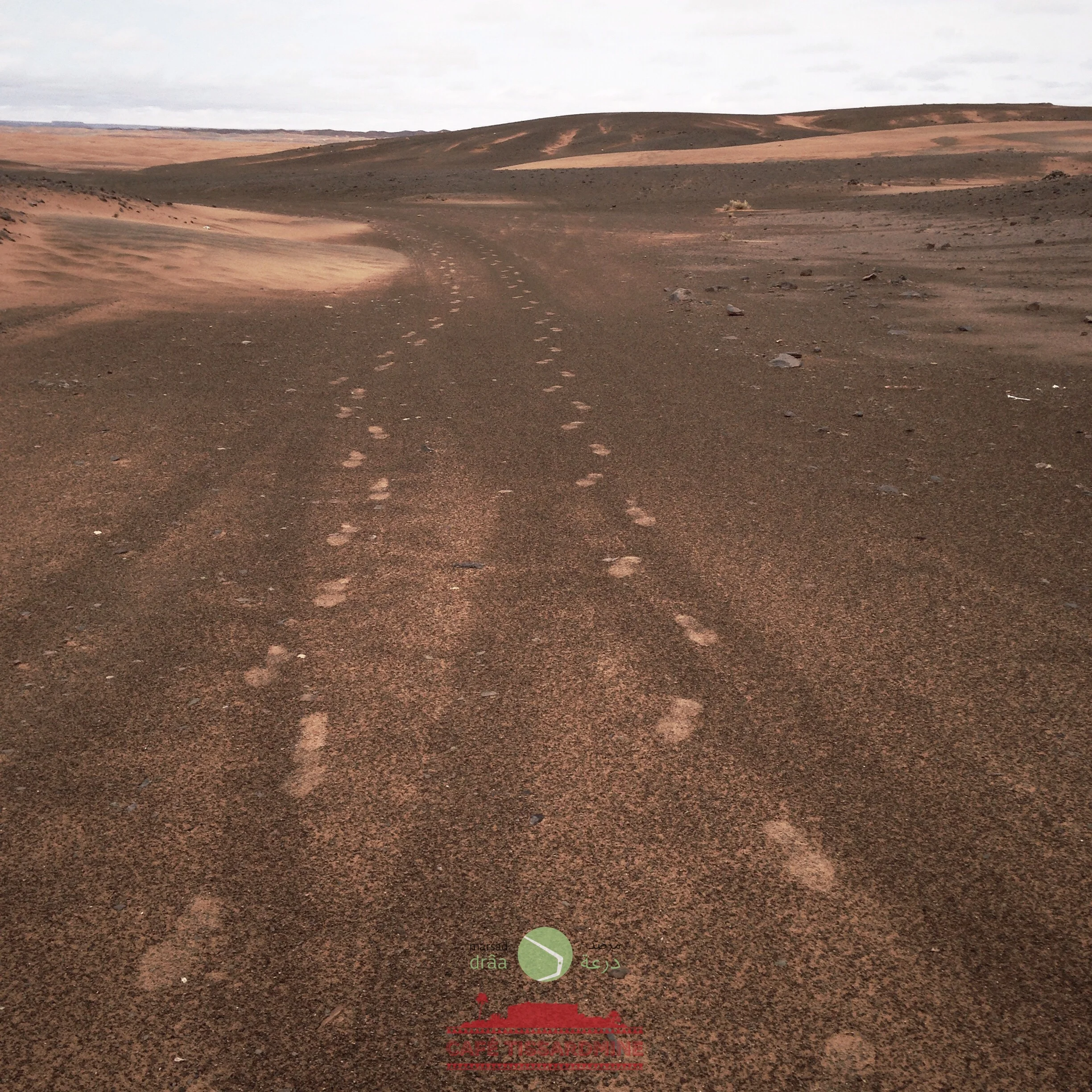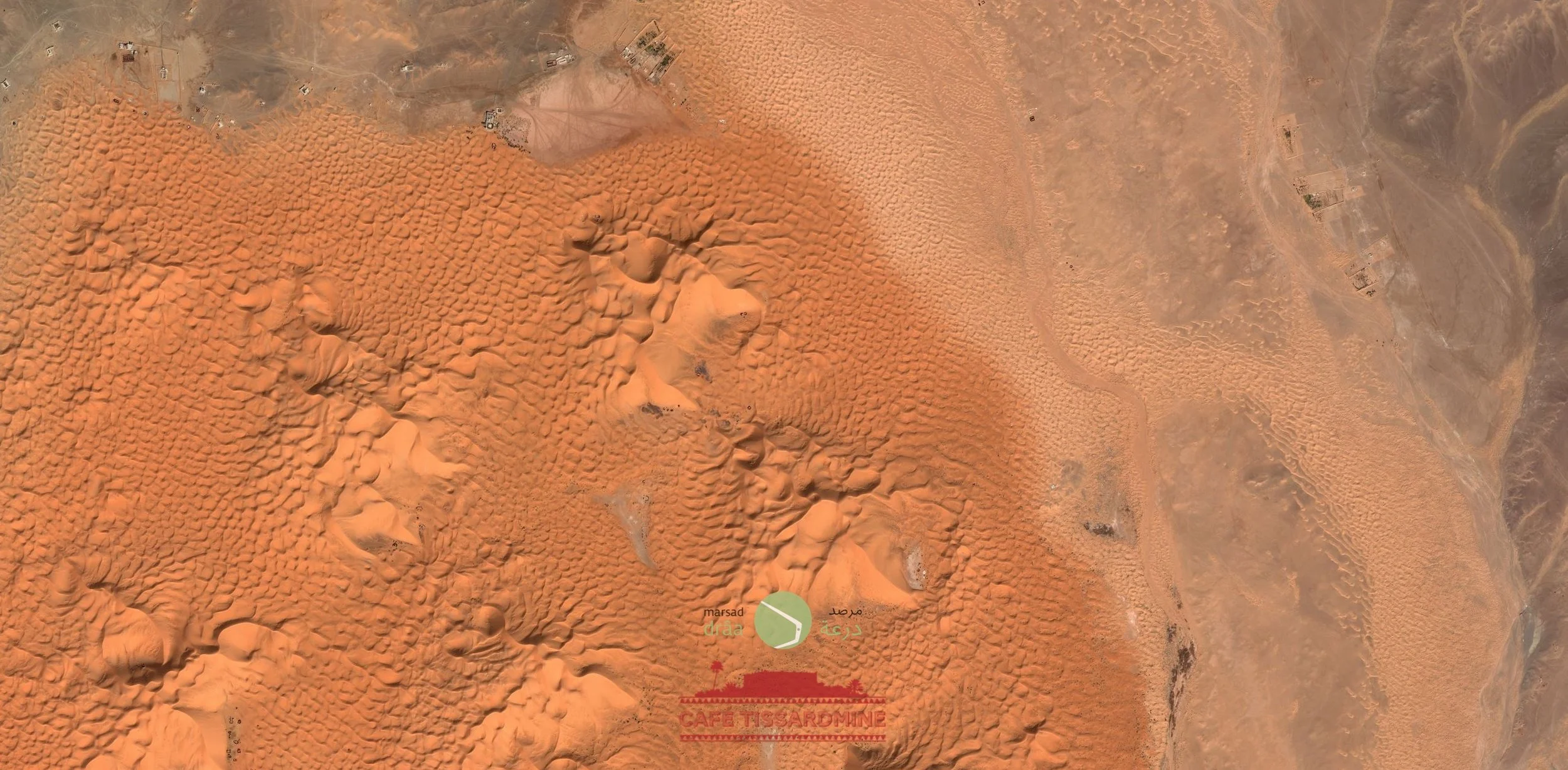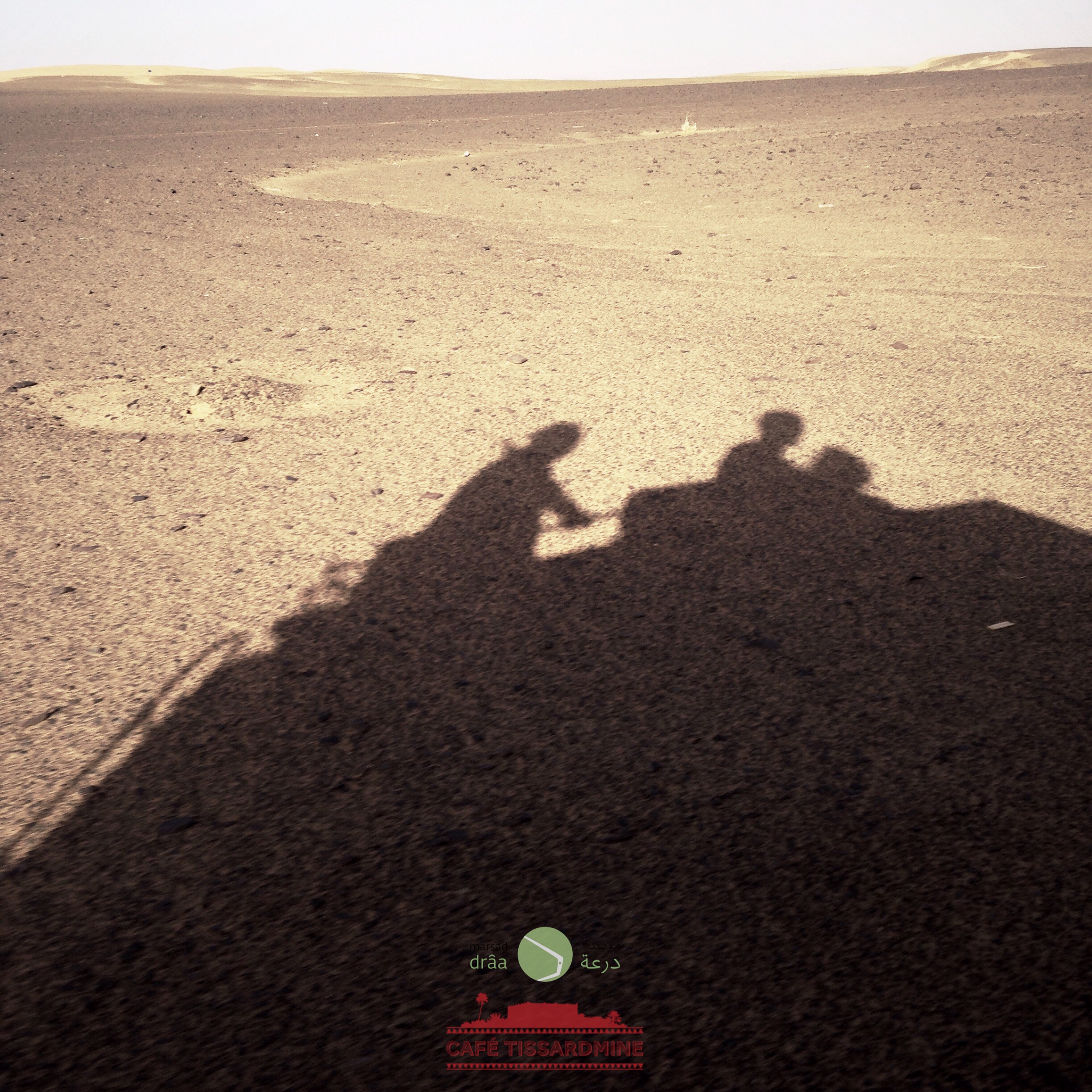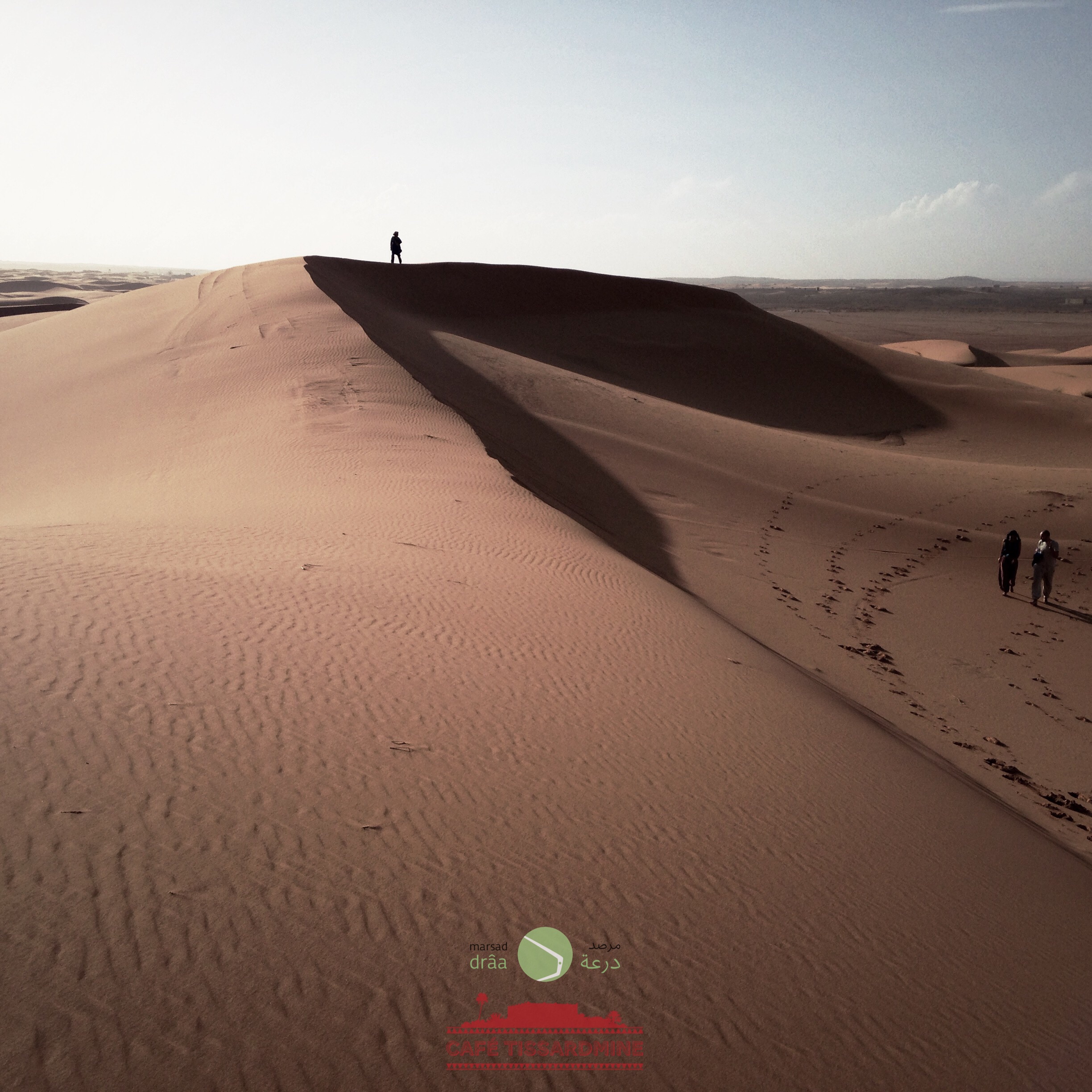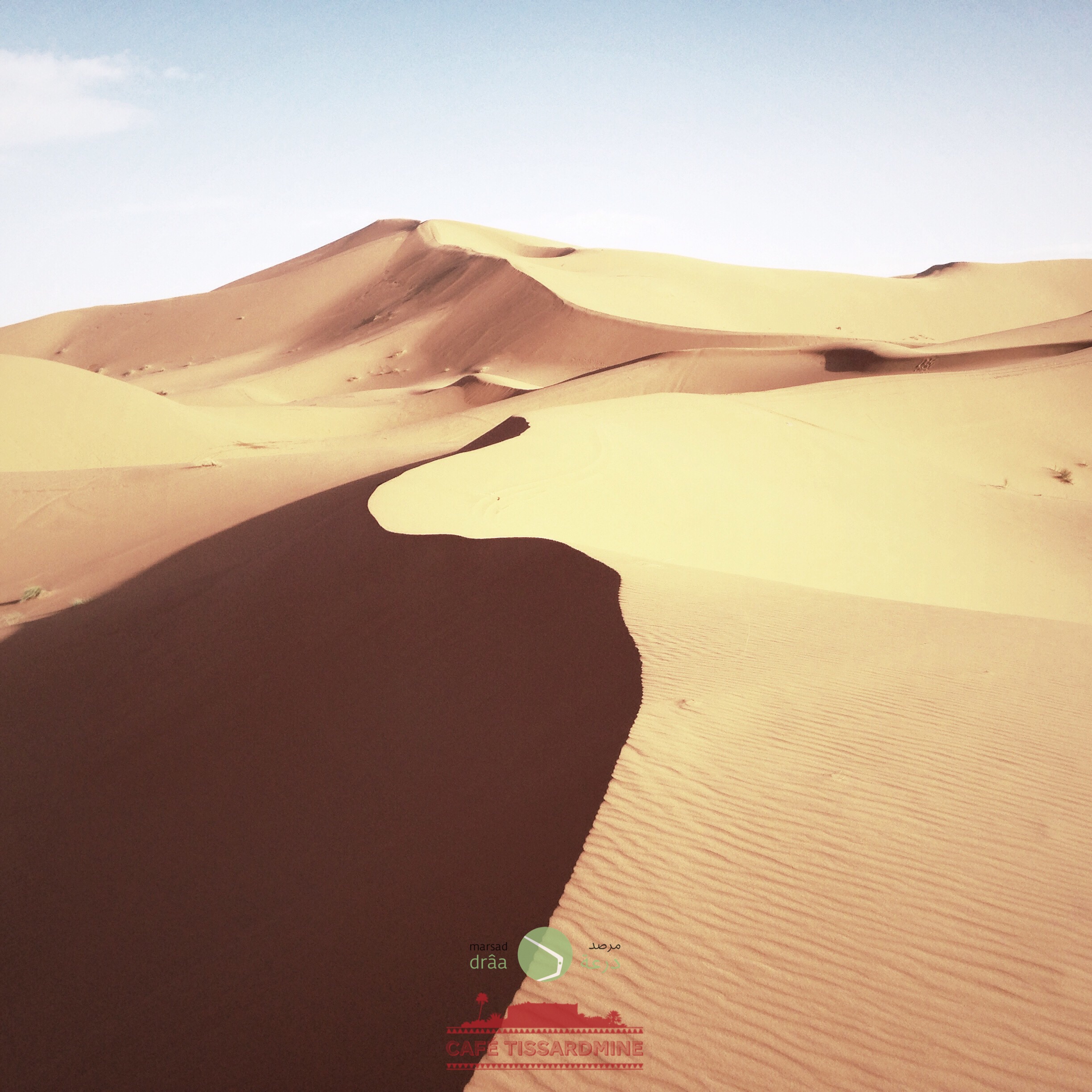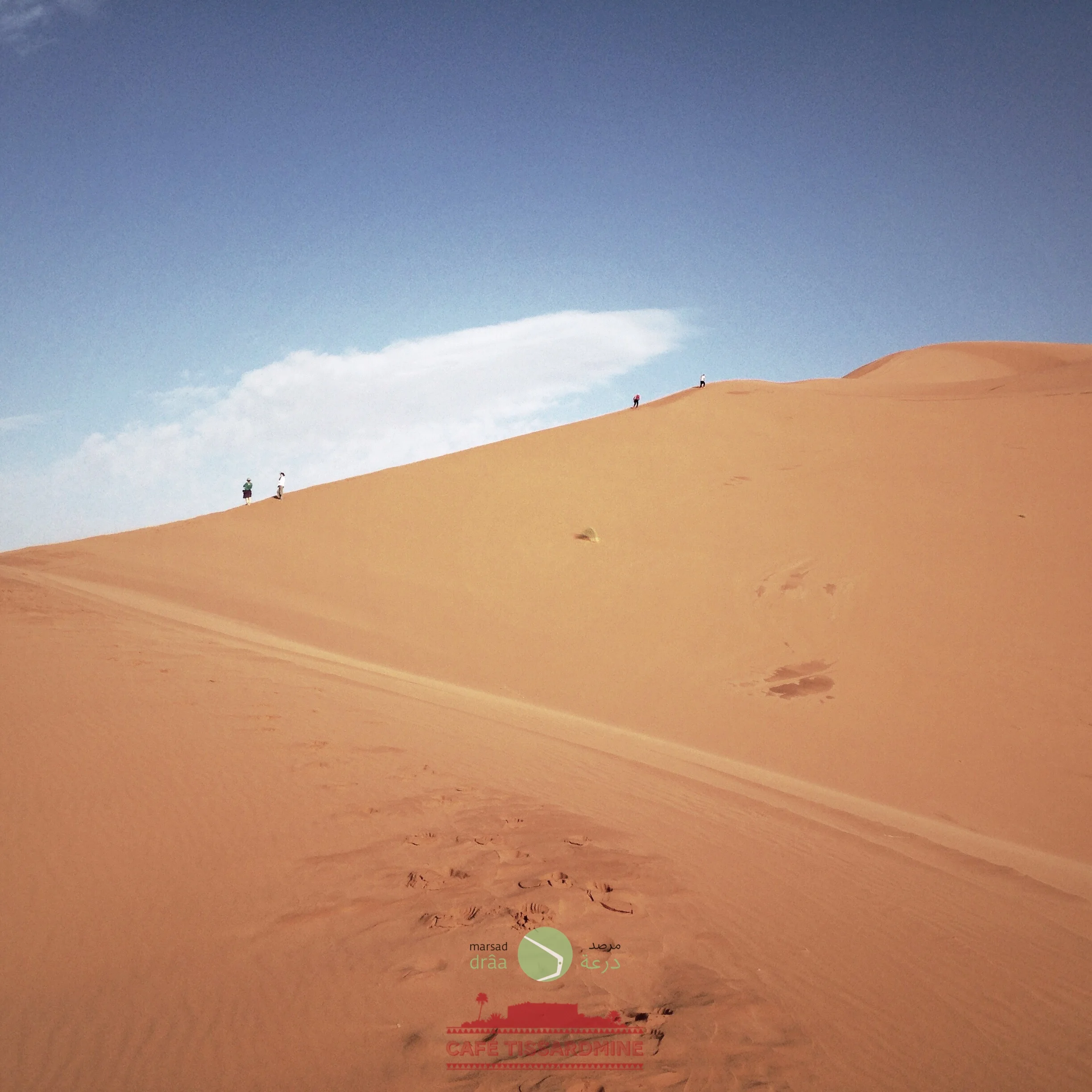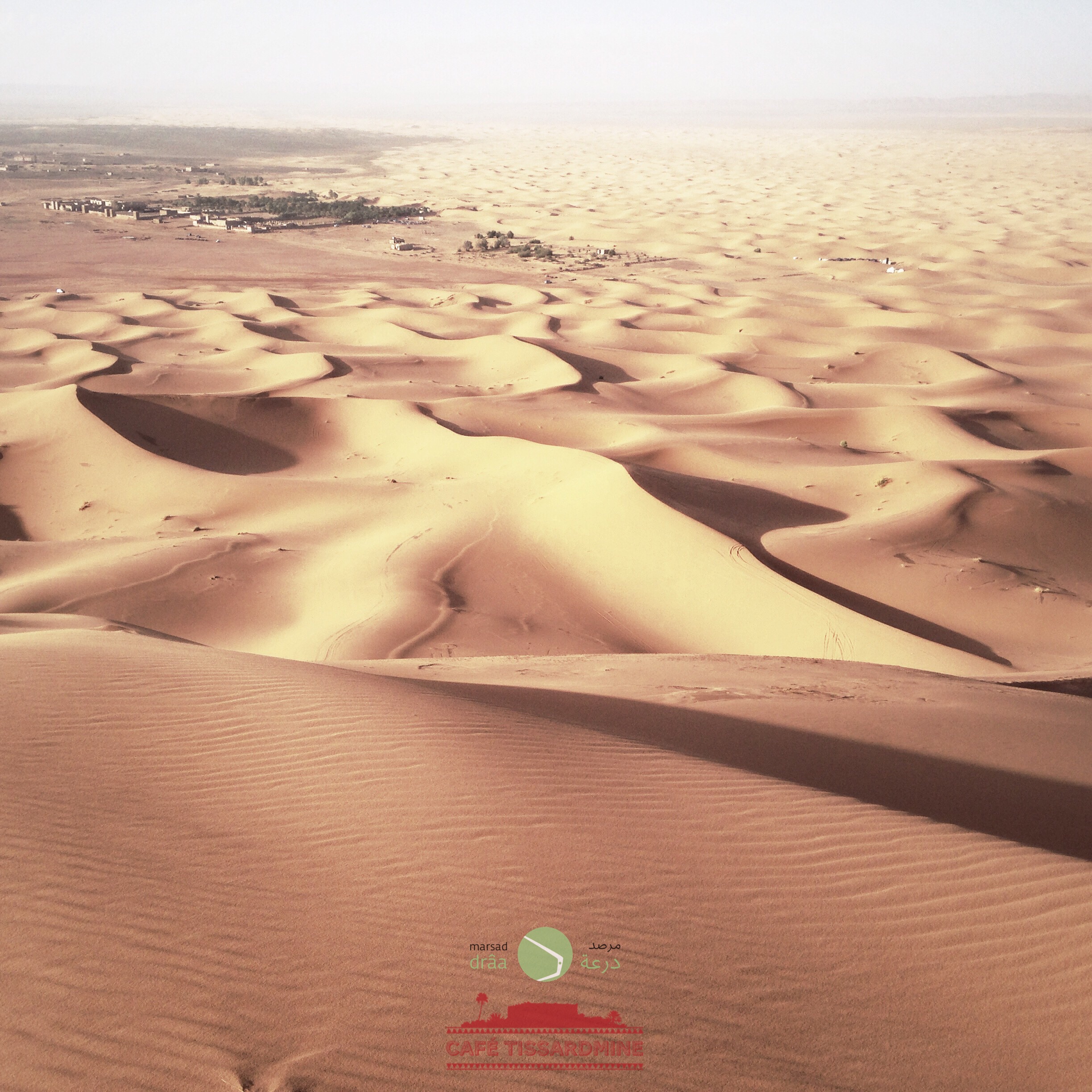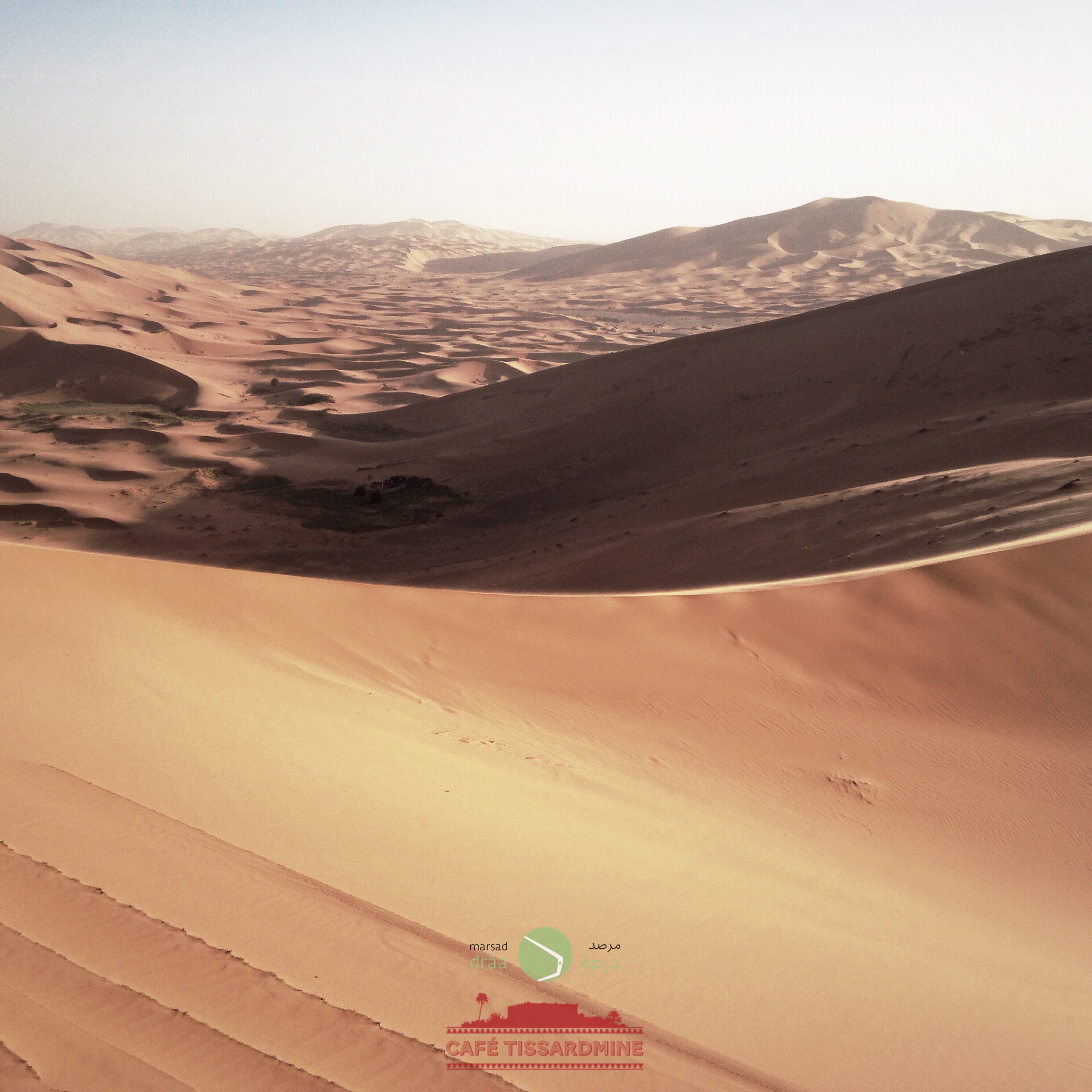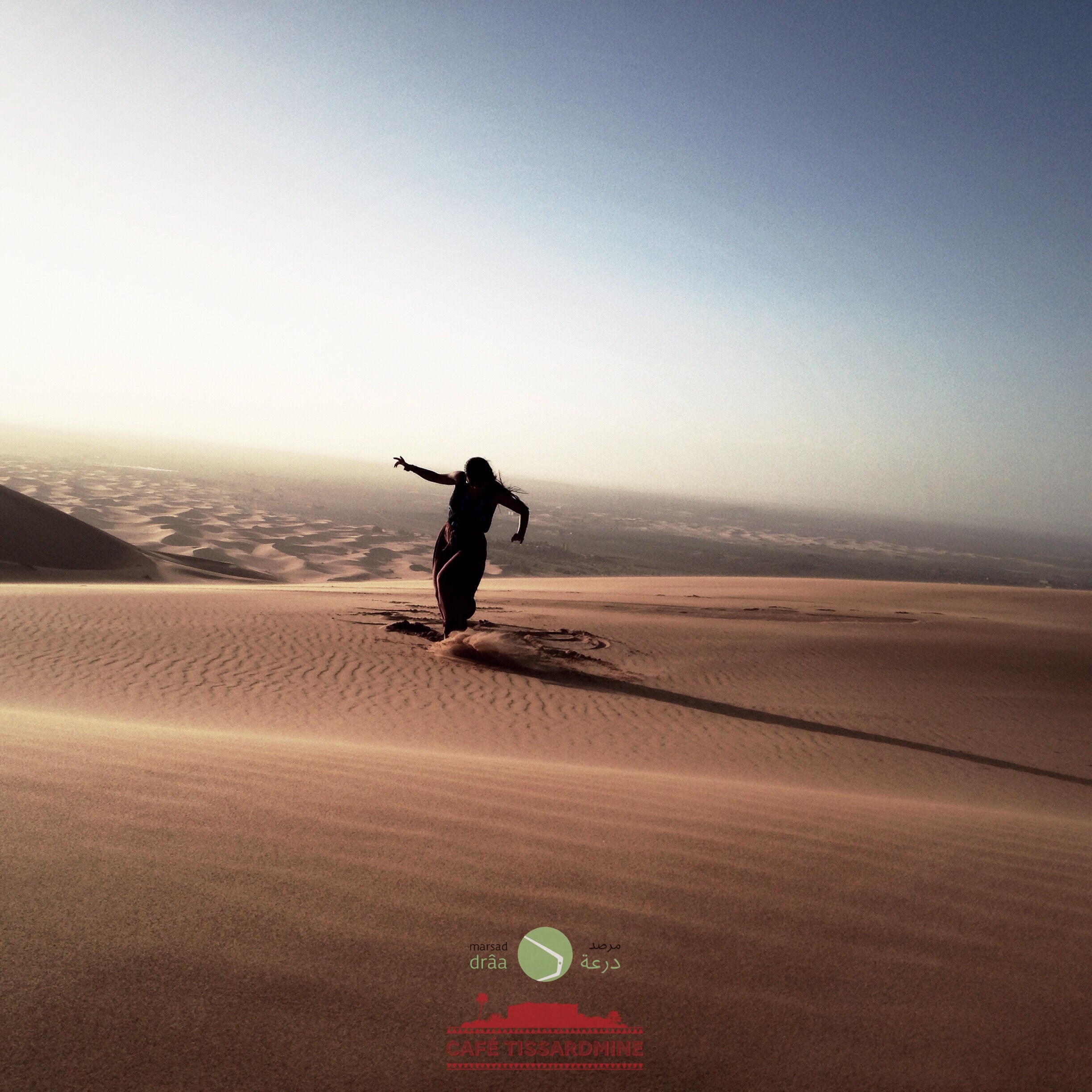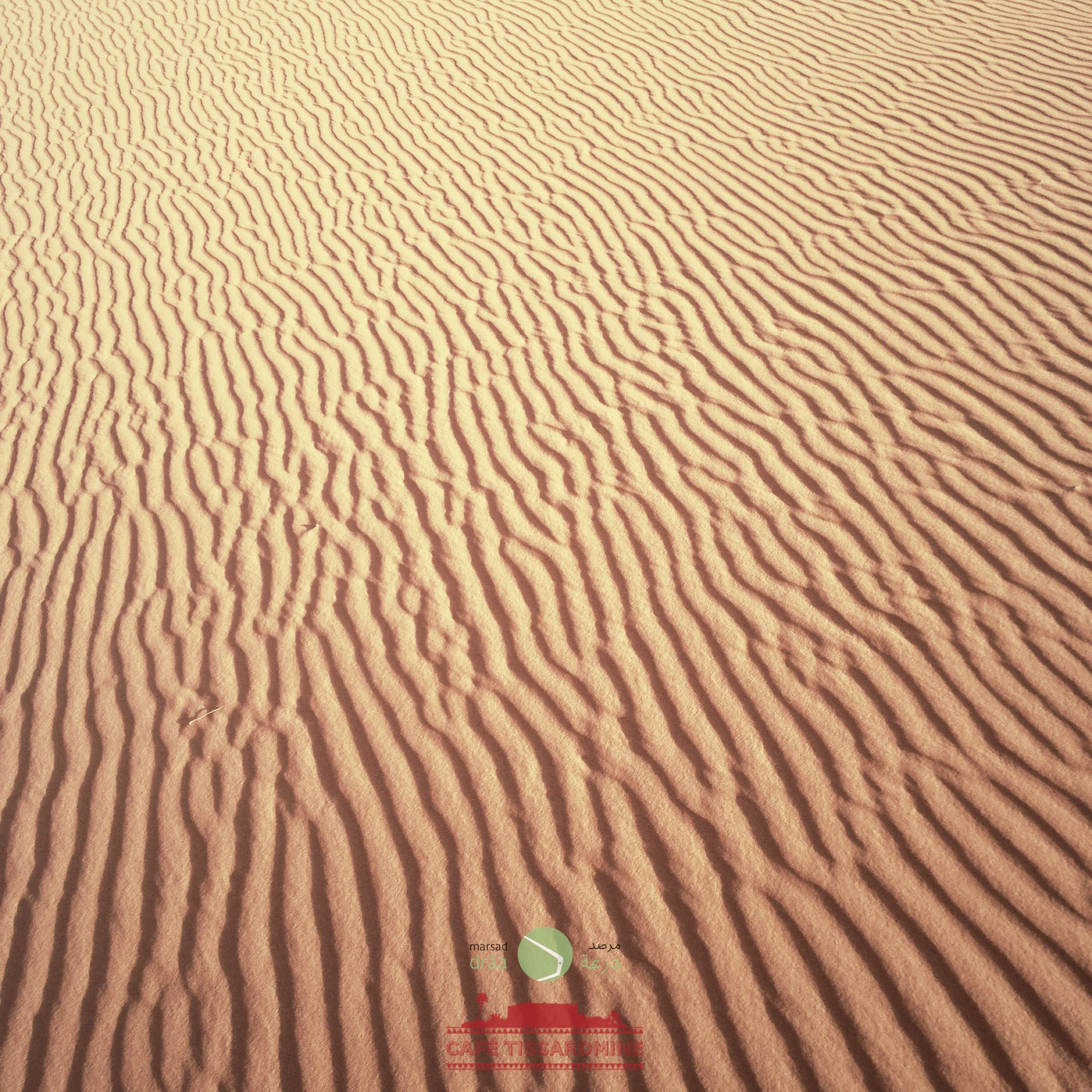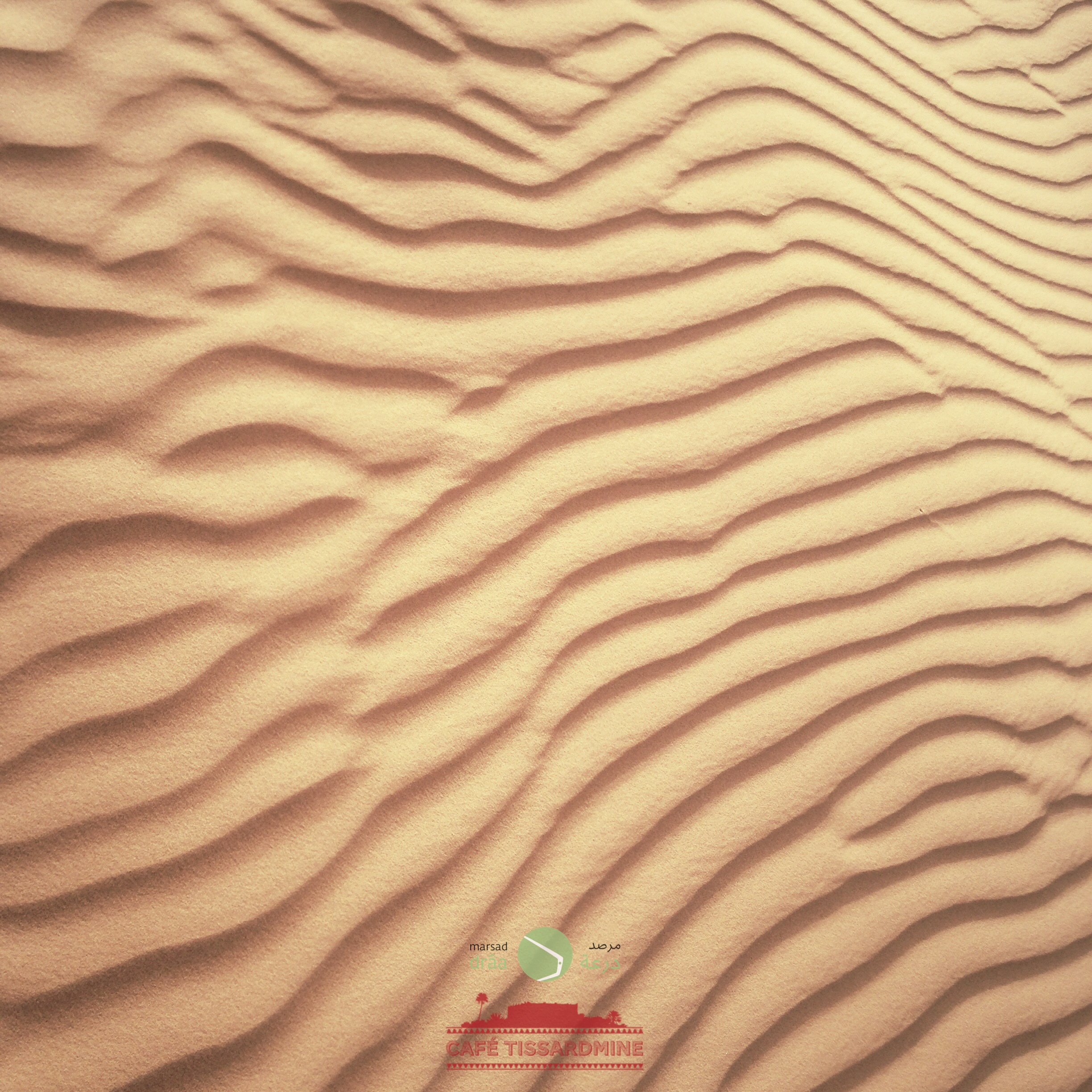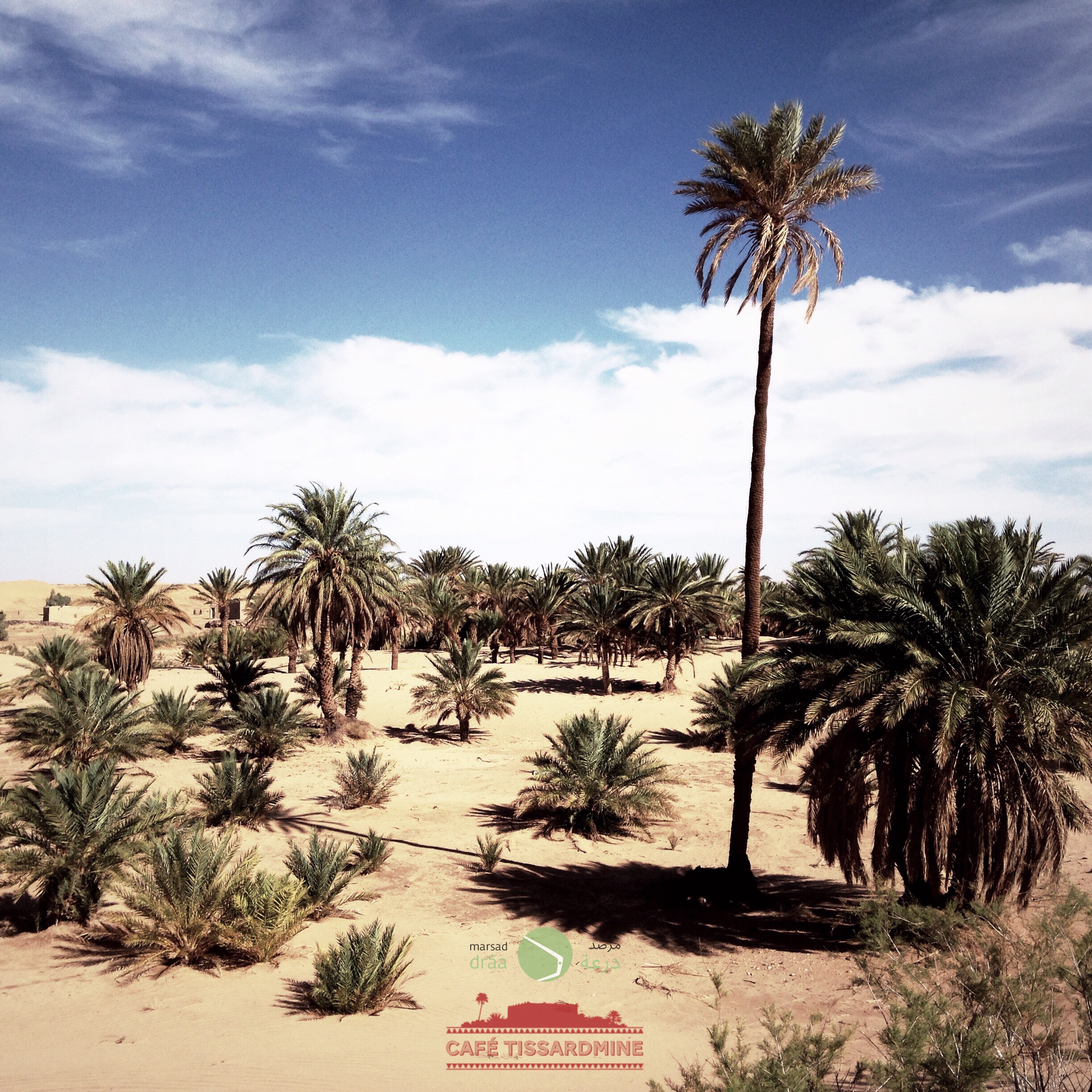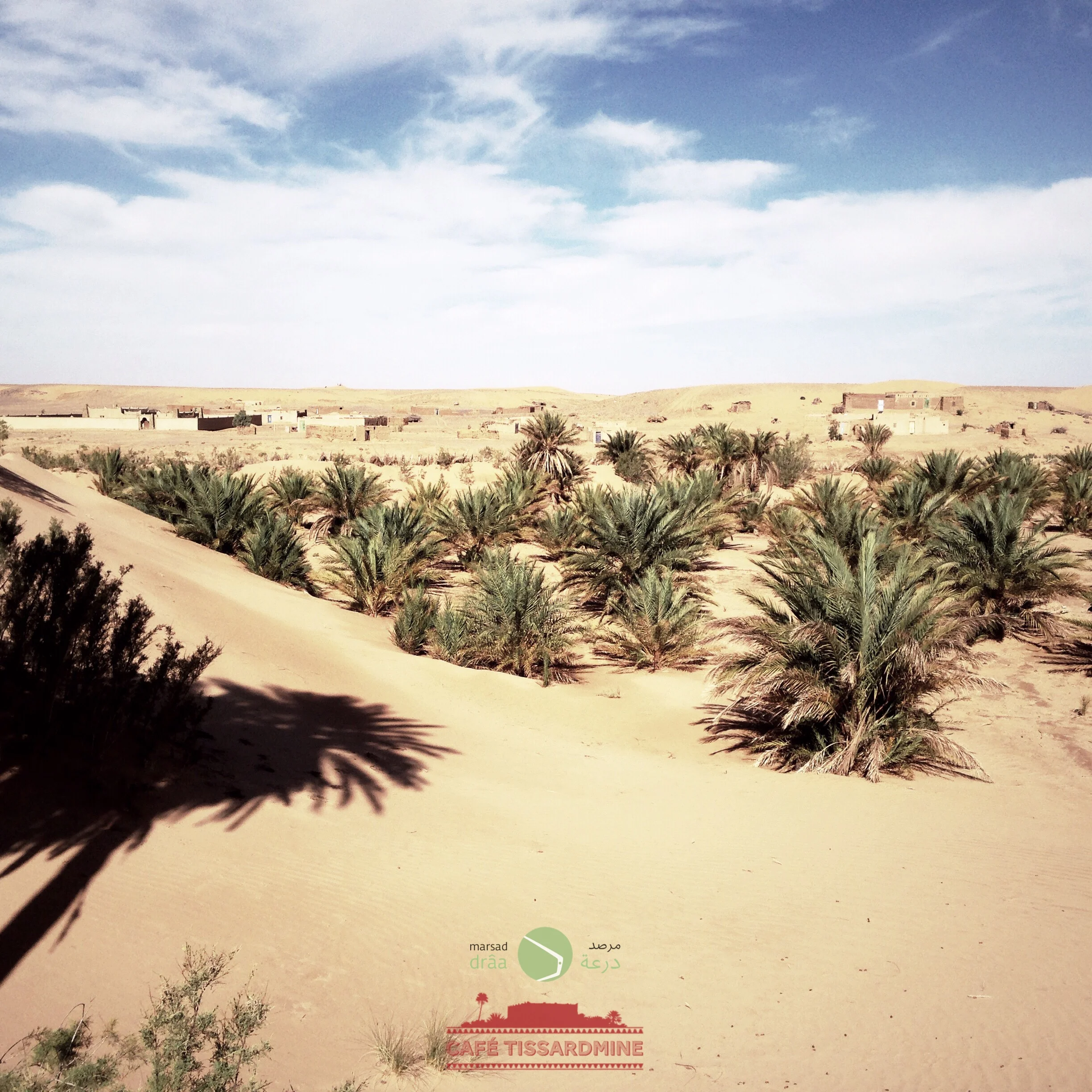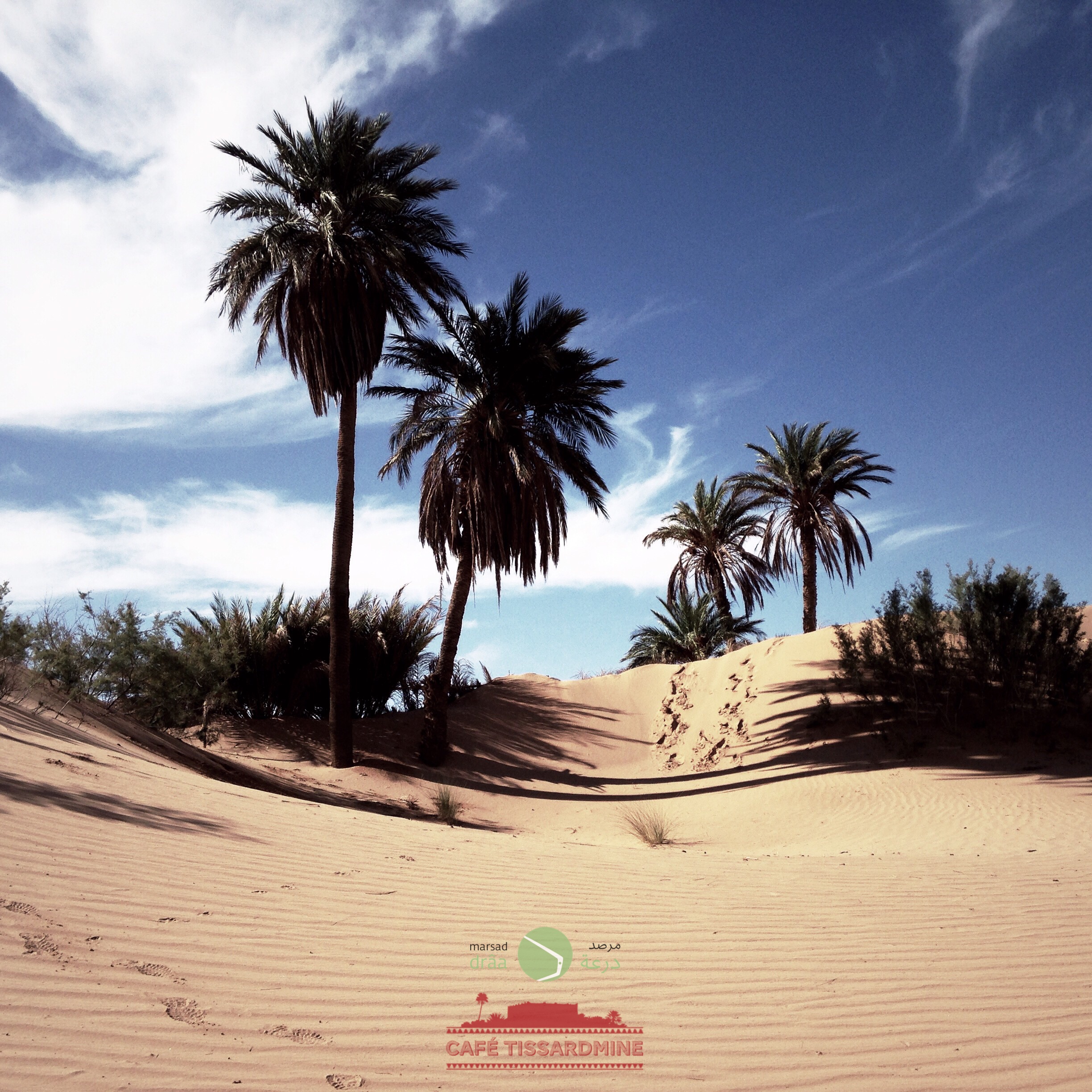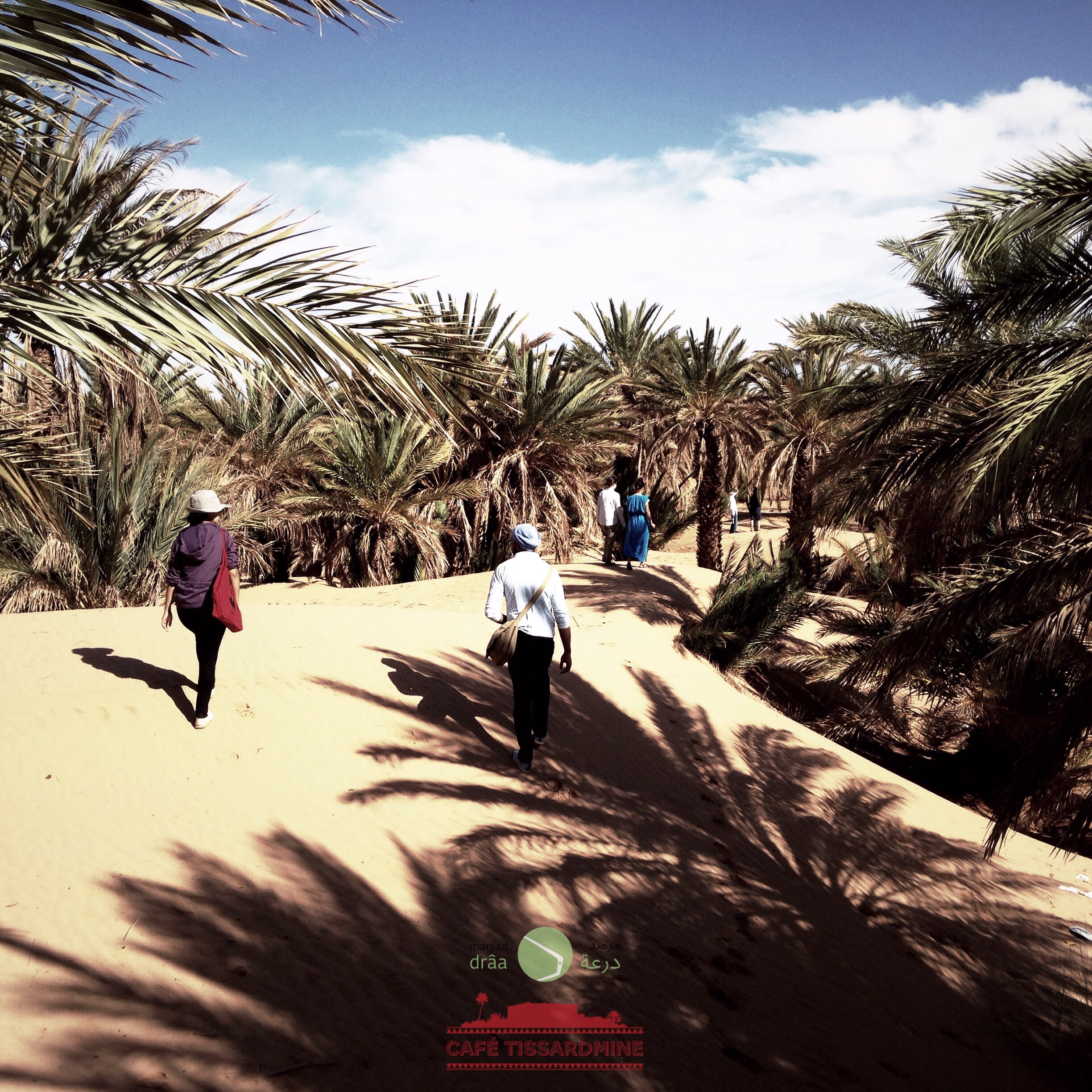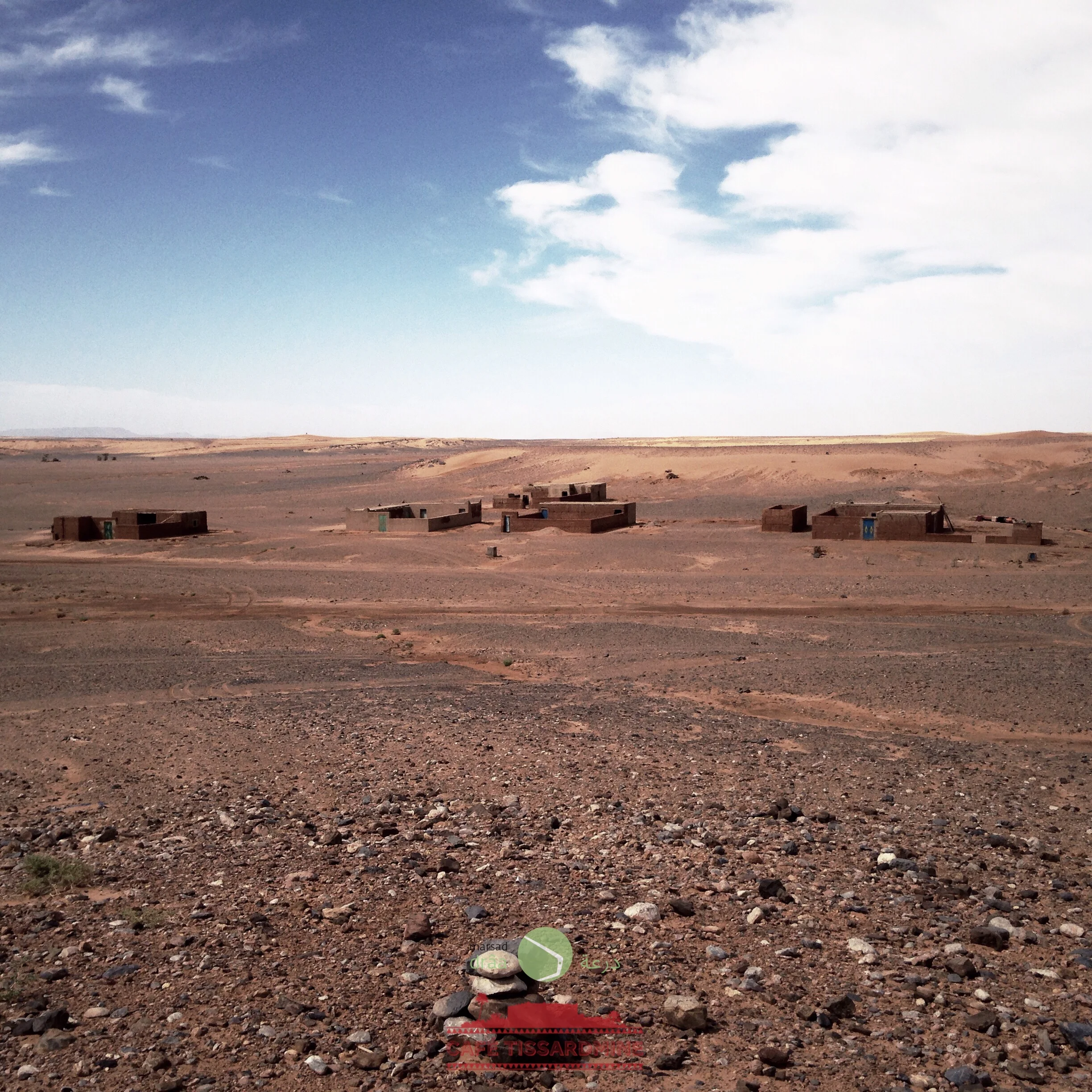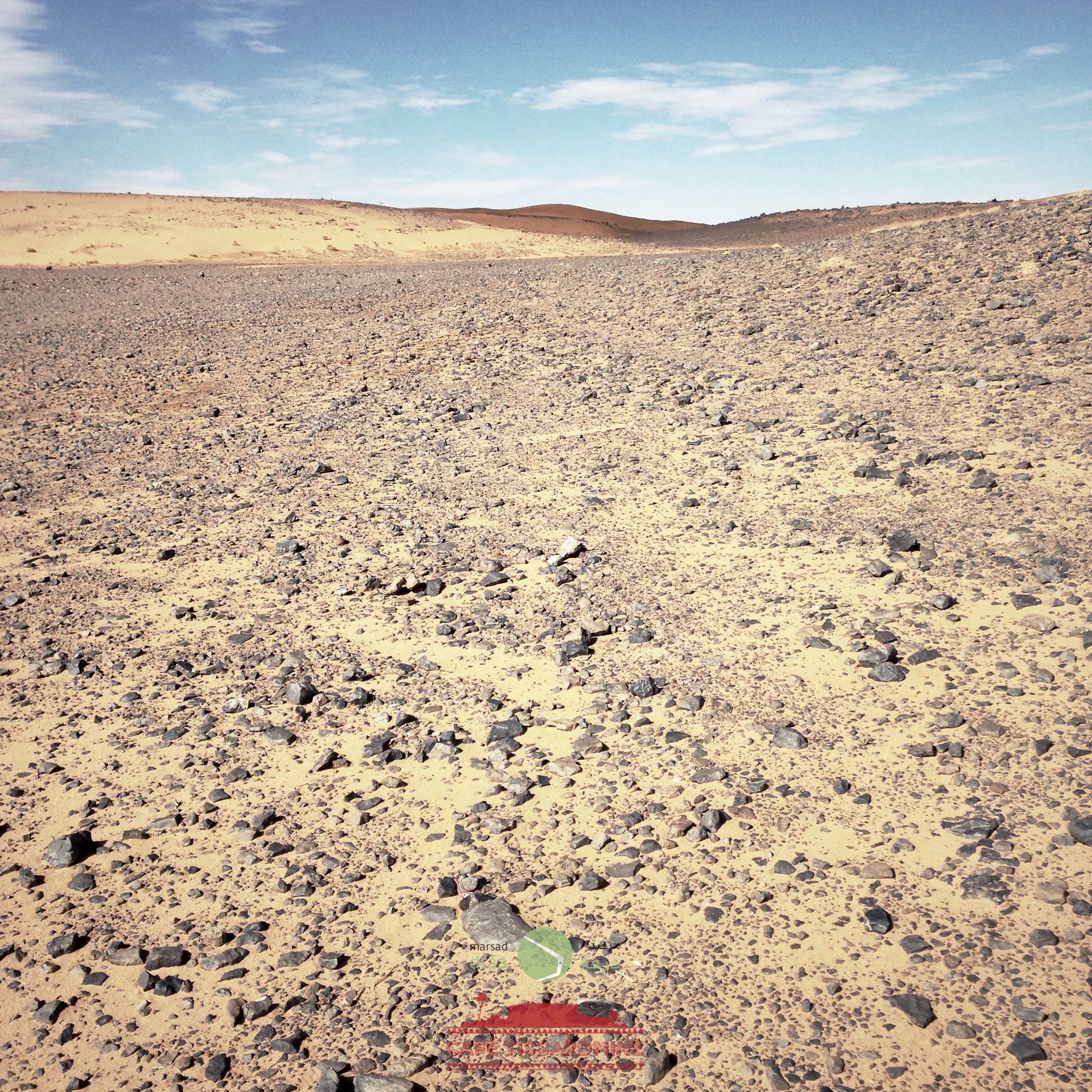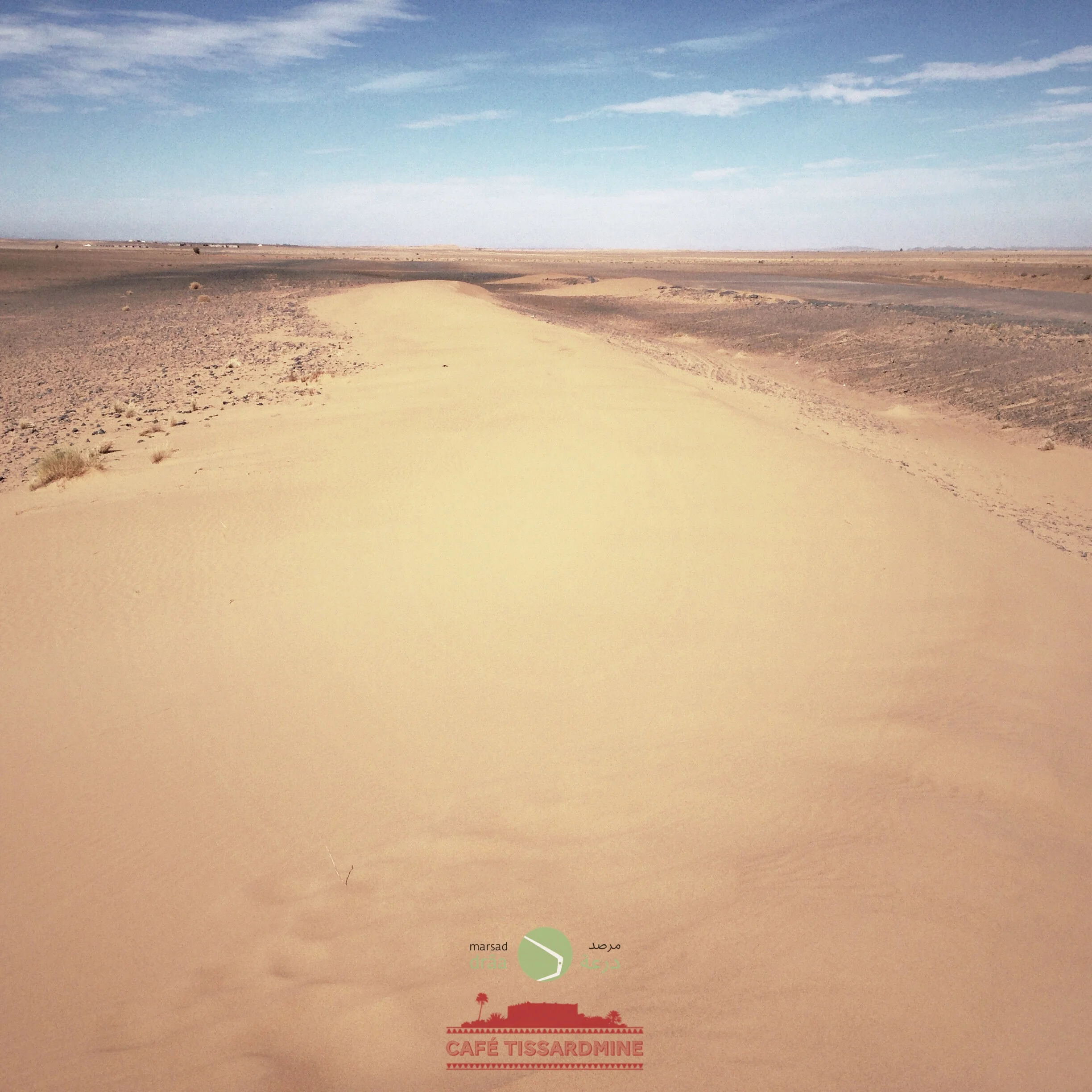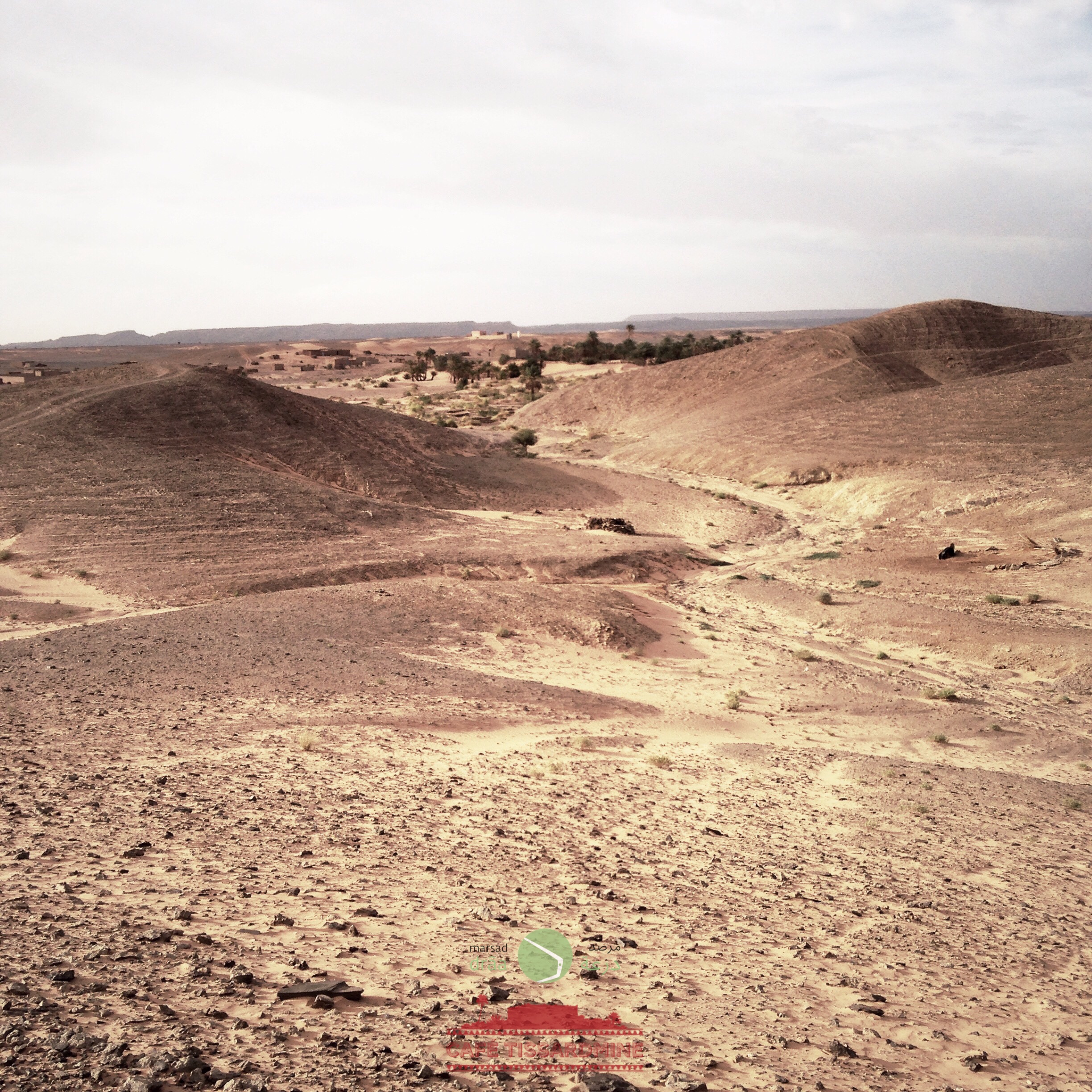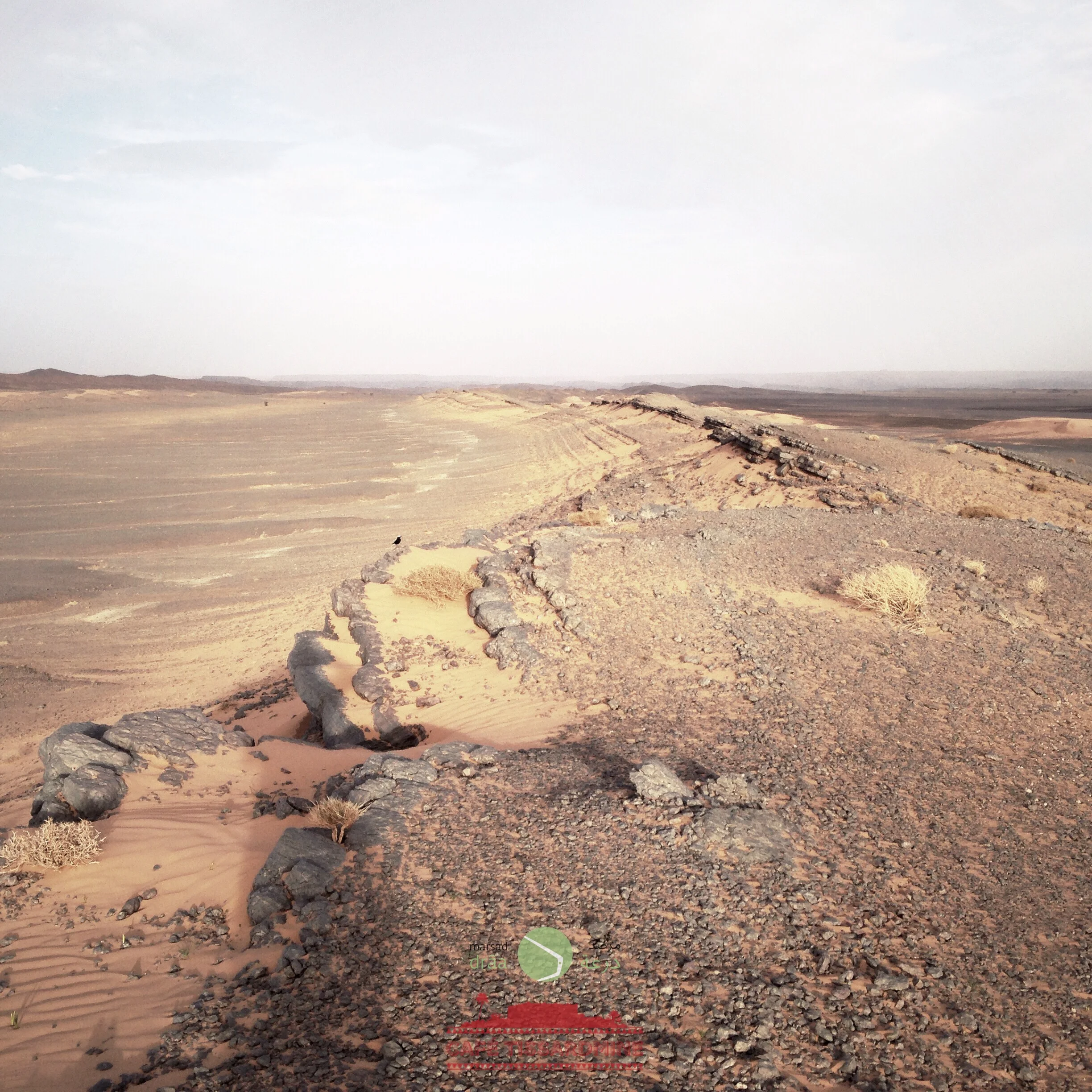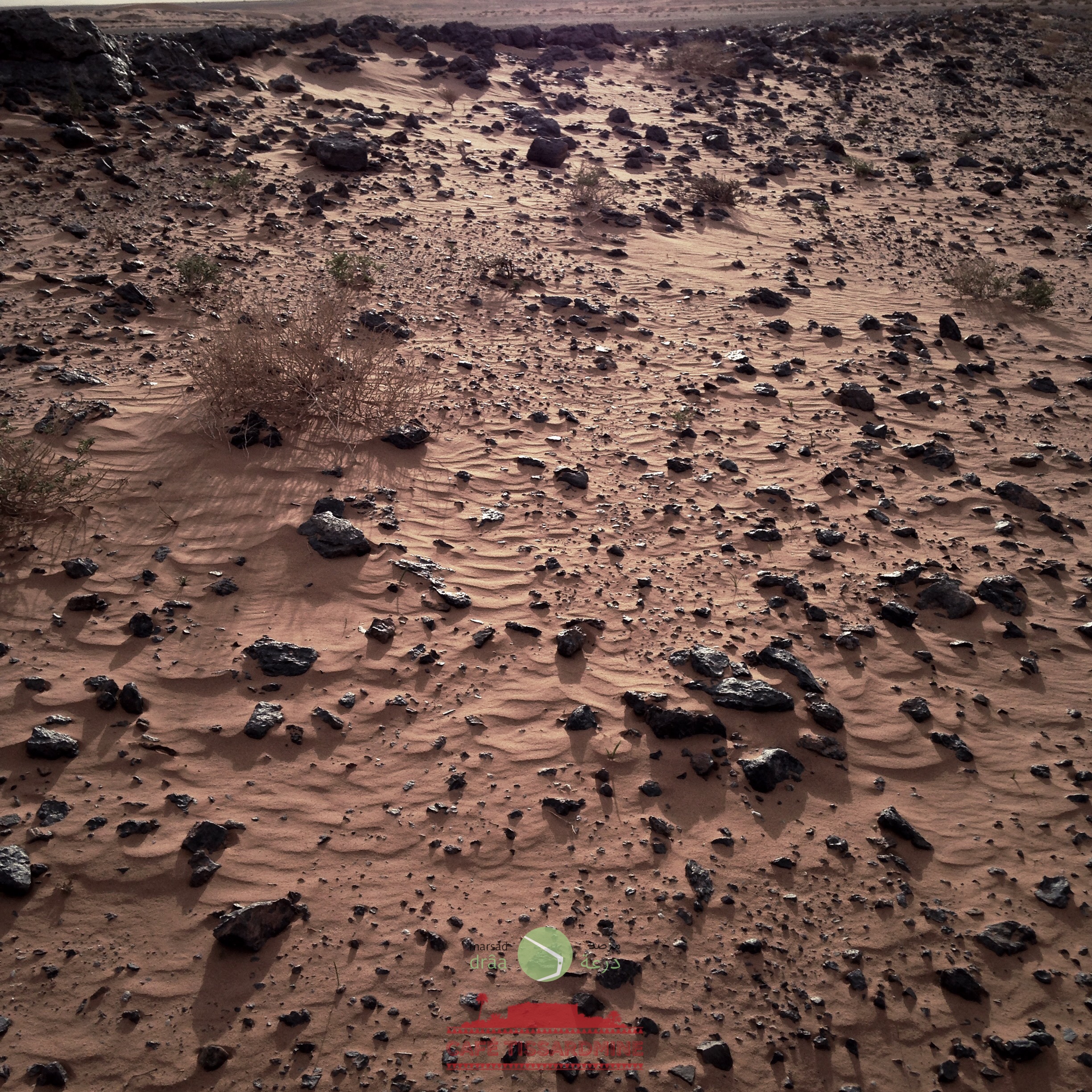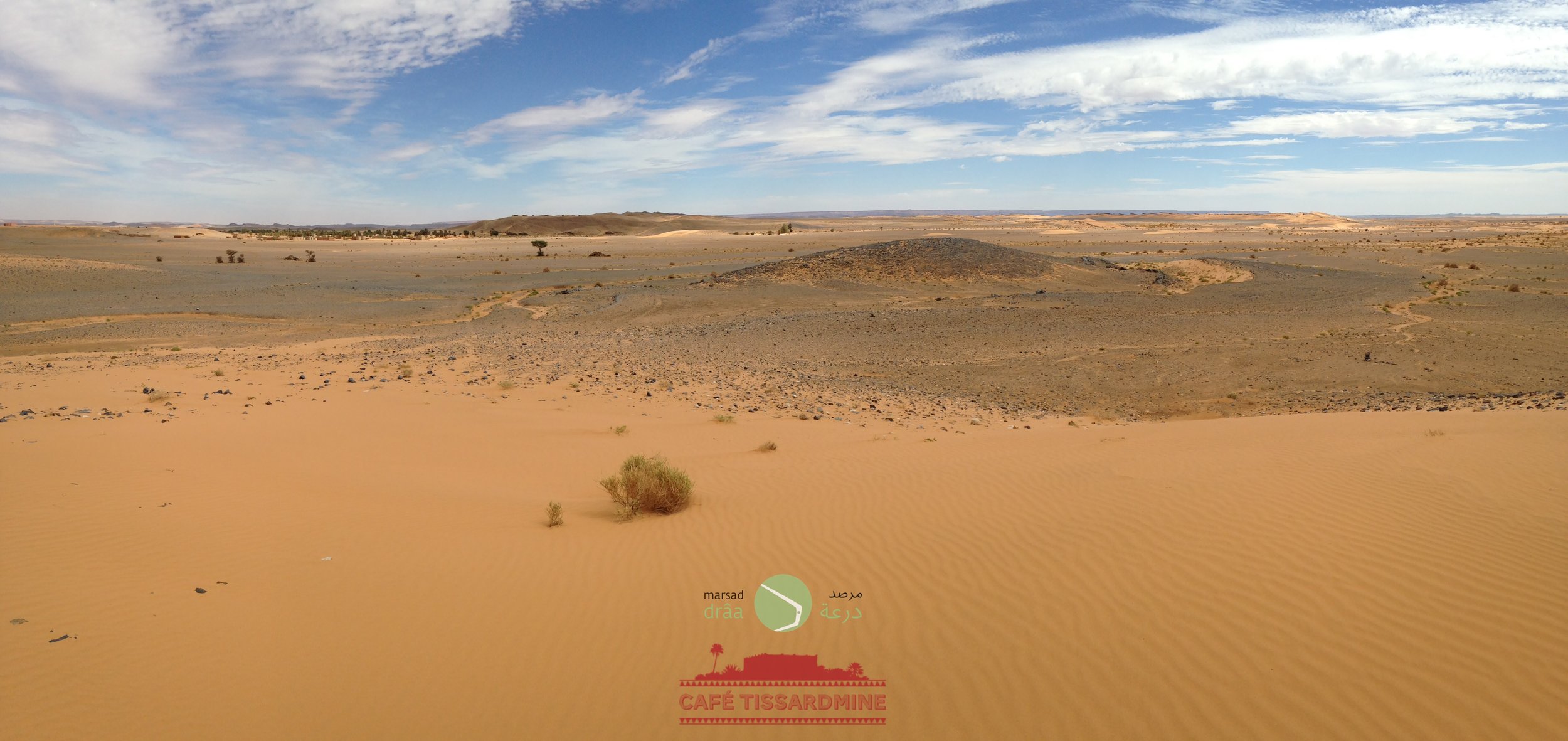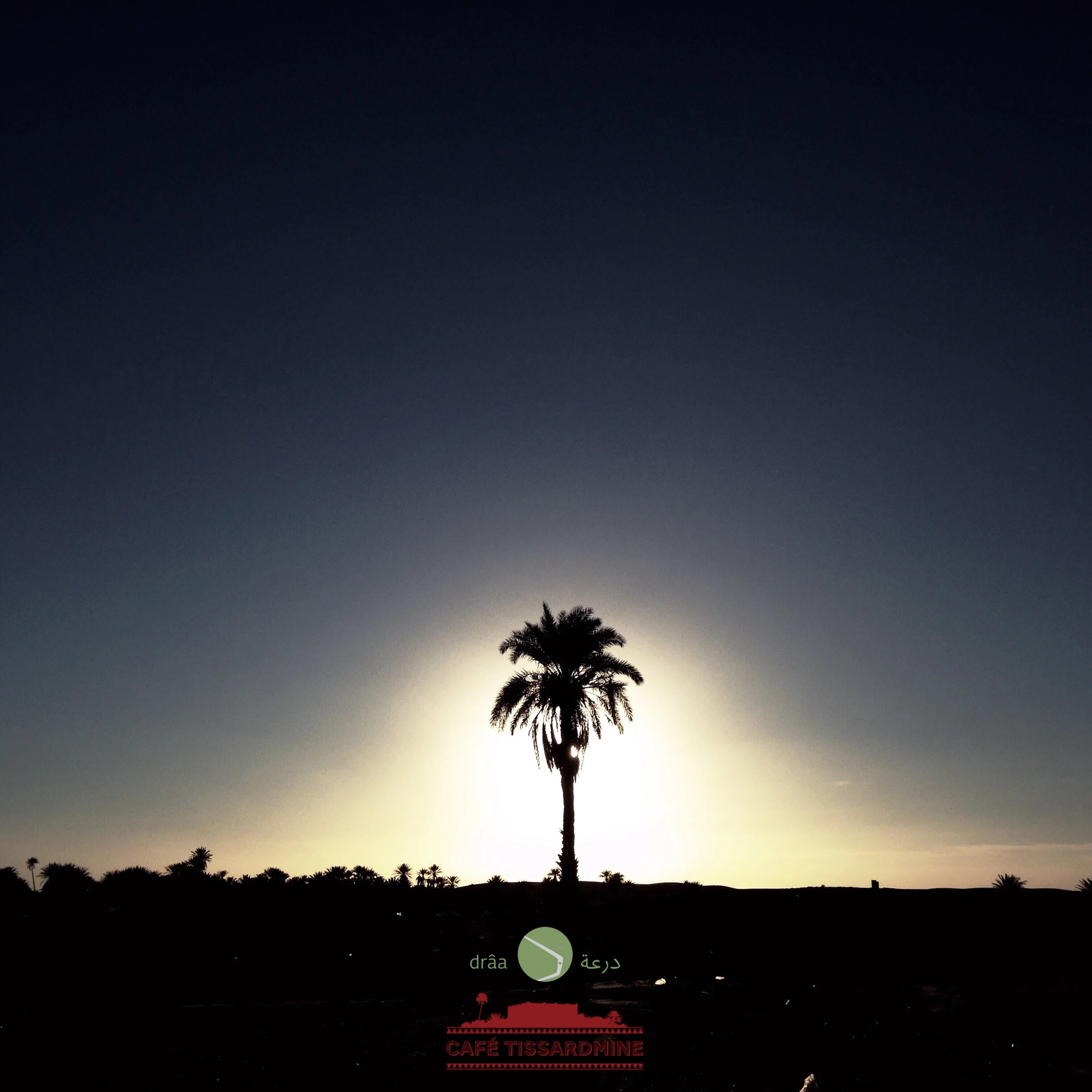Tissardmine DesertLab
Tissardmine, September 2014
organised by Marsad Drâa and Café Tissardmine
the program
episode 1: sand
The sand is a real problem in the desert. The dunes move quickly according to the winds and it is very difficult to stop them. Once they arrive to a palm grove, that is not in use, it is just a question of time to make it disappeared. Besides the houses and constructions of places without the protection of a palm grove must be adapted to the arrival of sand everyday, specially in windy days. During the workshop we have seen the effects of the sand in the houses, the barriers people do with palm branches and we have tried several solutions or even how we can use sand as a building material.
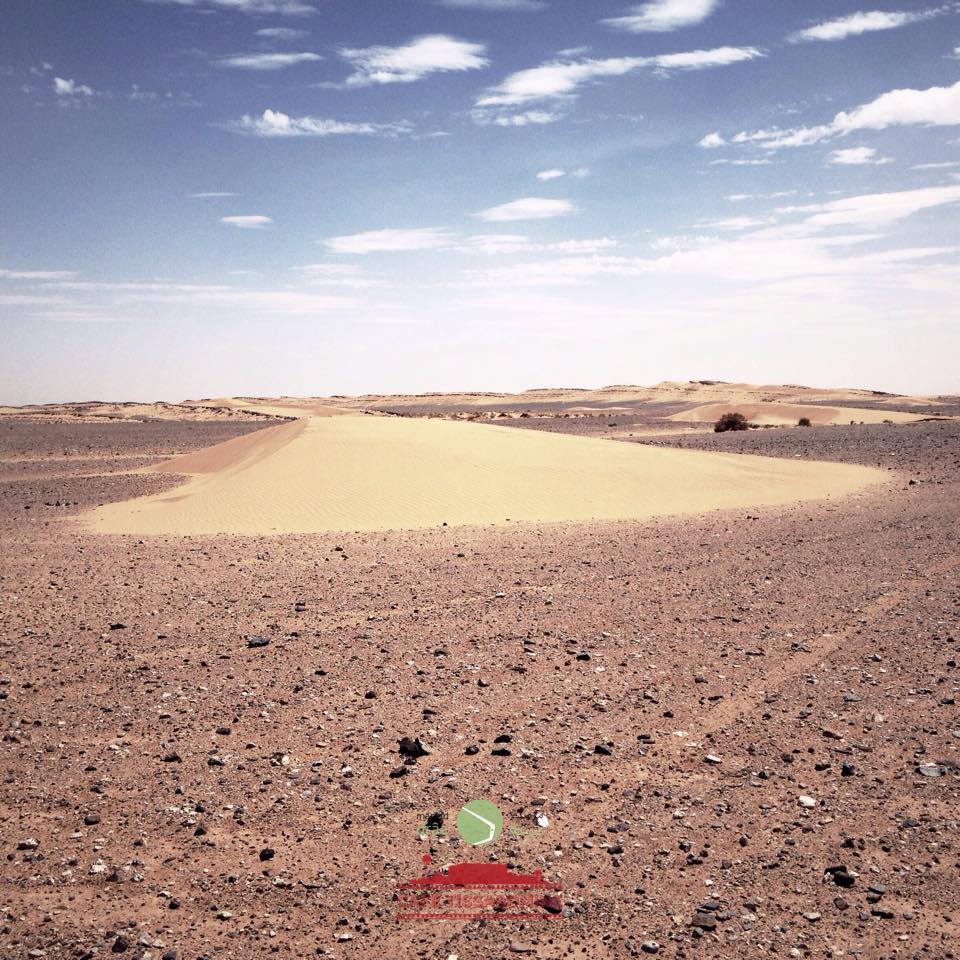
A little dune (barkhan type) that has moved 80 in just 3 days. It is 500 m far from the first building of the village.
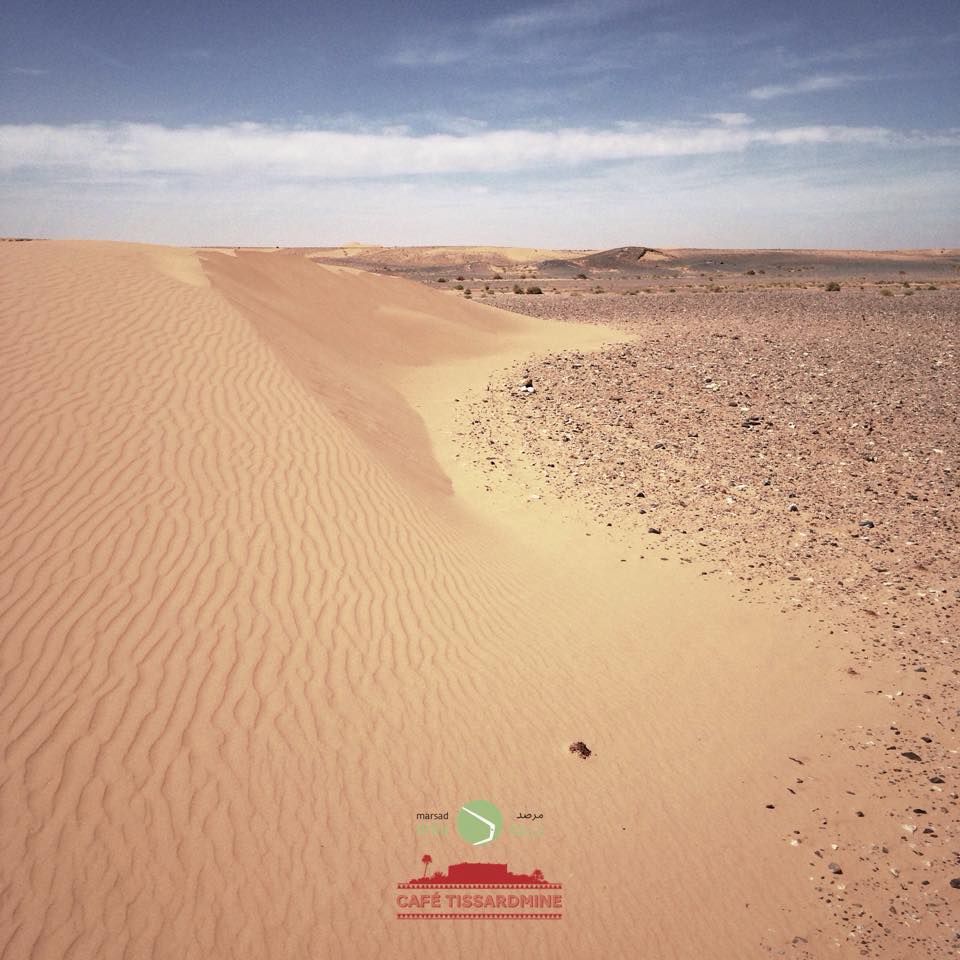
Barkhan dune.
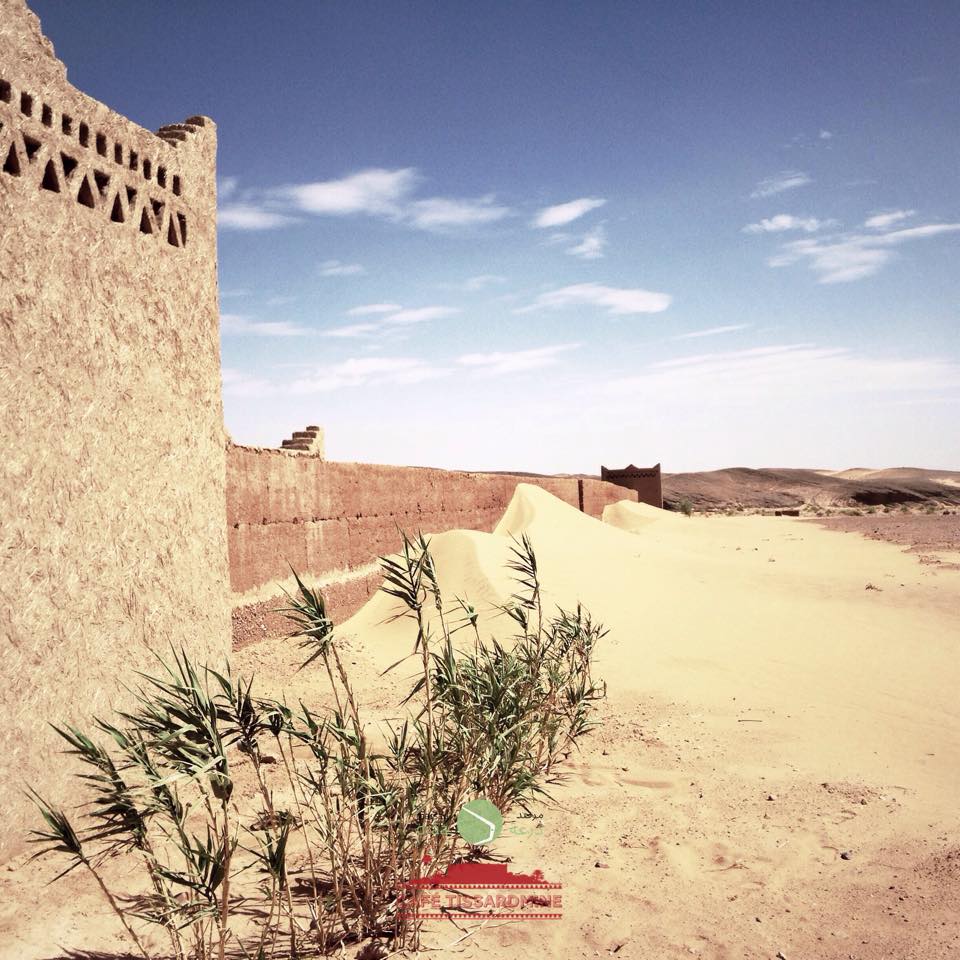
The effects of the dunes over the buildings. Every year they have to remove sand from the wall with a tractor. The wall is 240cmm high...
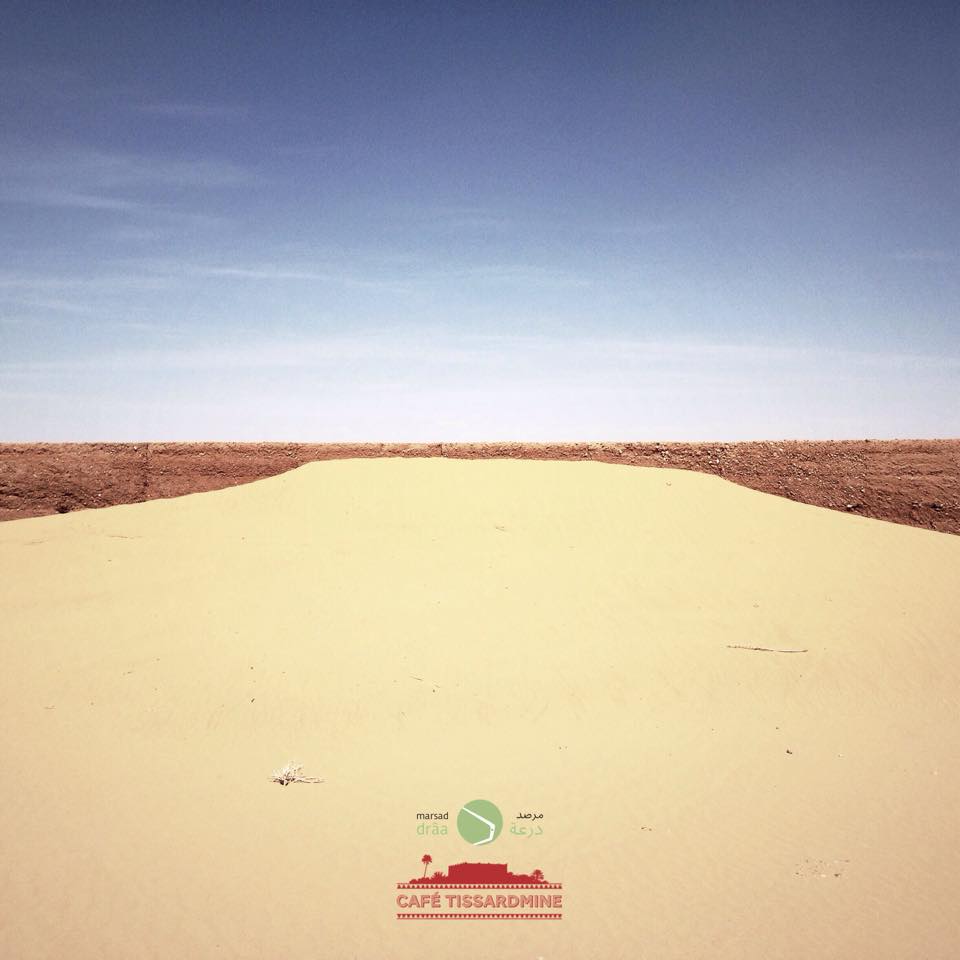
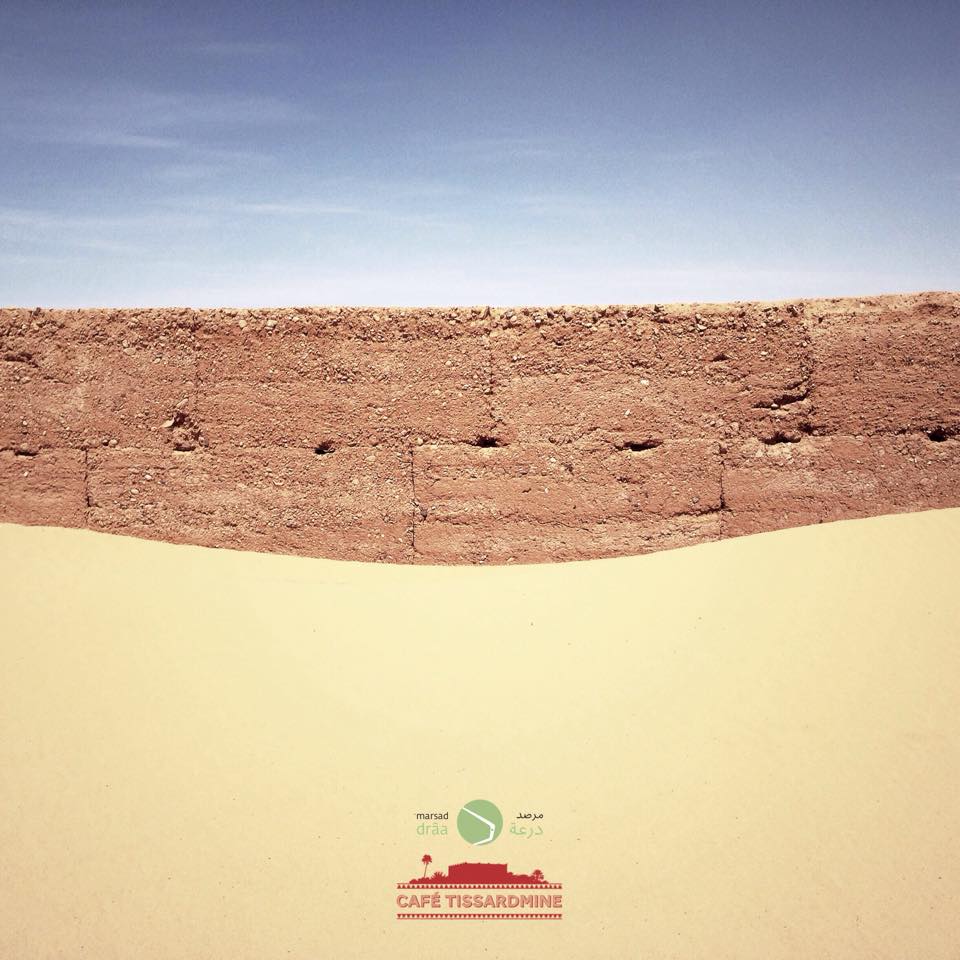

In the "palm grove" of Tissardmine we can find a simple solution, to make a mound of earth.
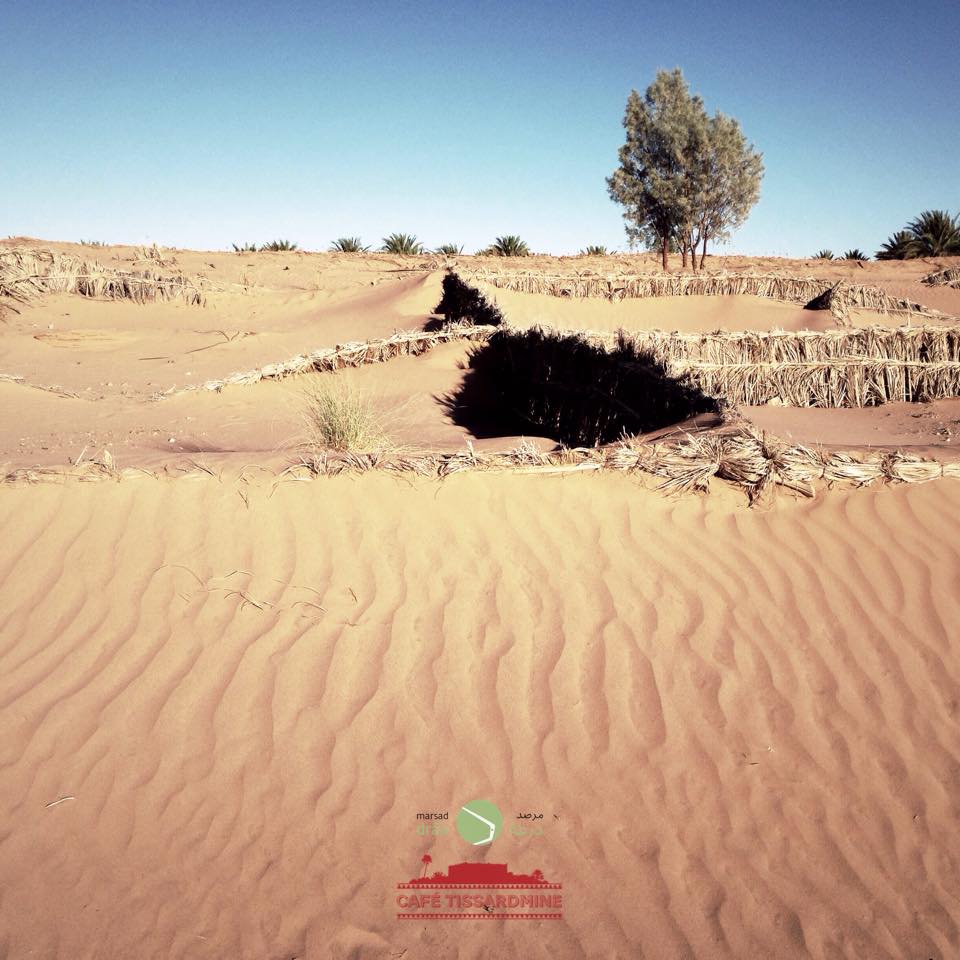
Or use palm branches.
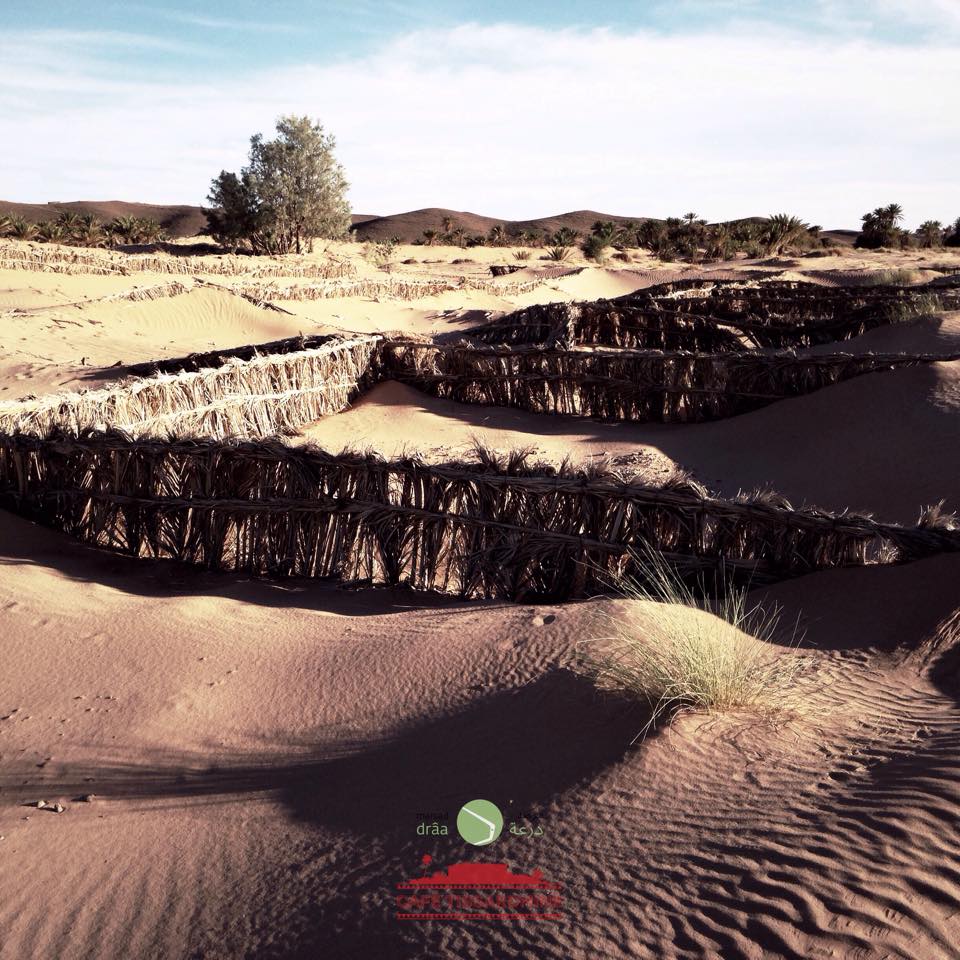

During our stay, workers have built a barrier with palm branches, on the purest side of the village. We will see in the next weeks how is doing this new barrier.
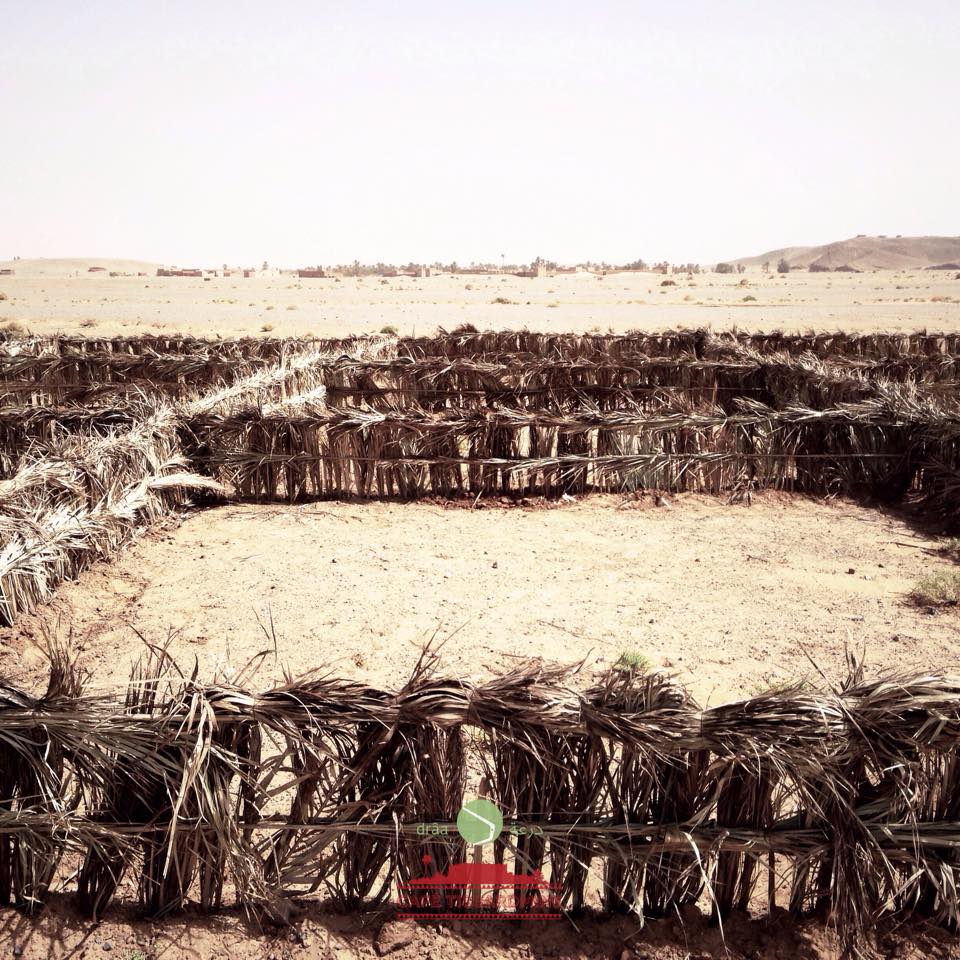
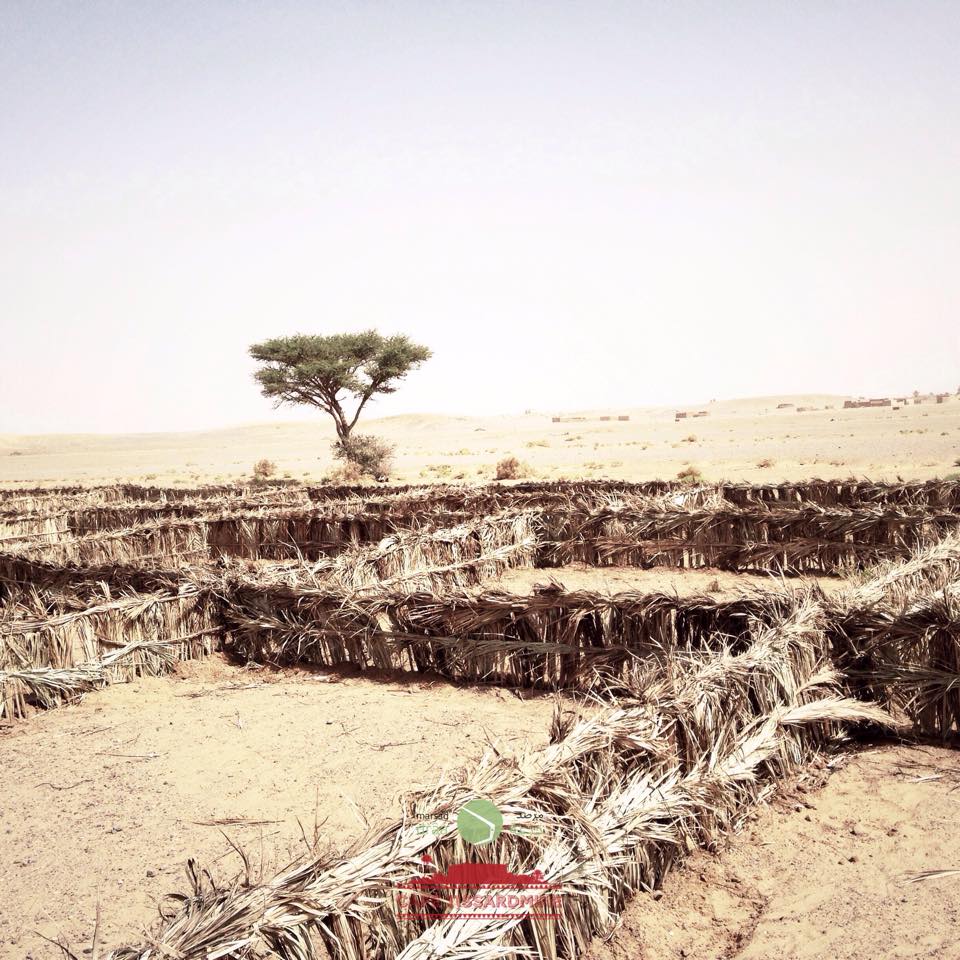
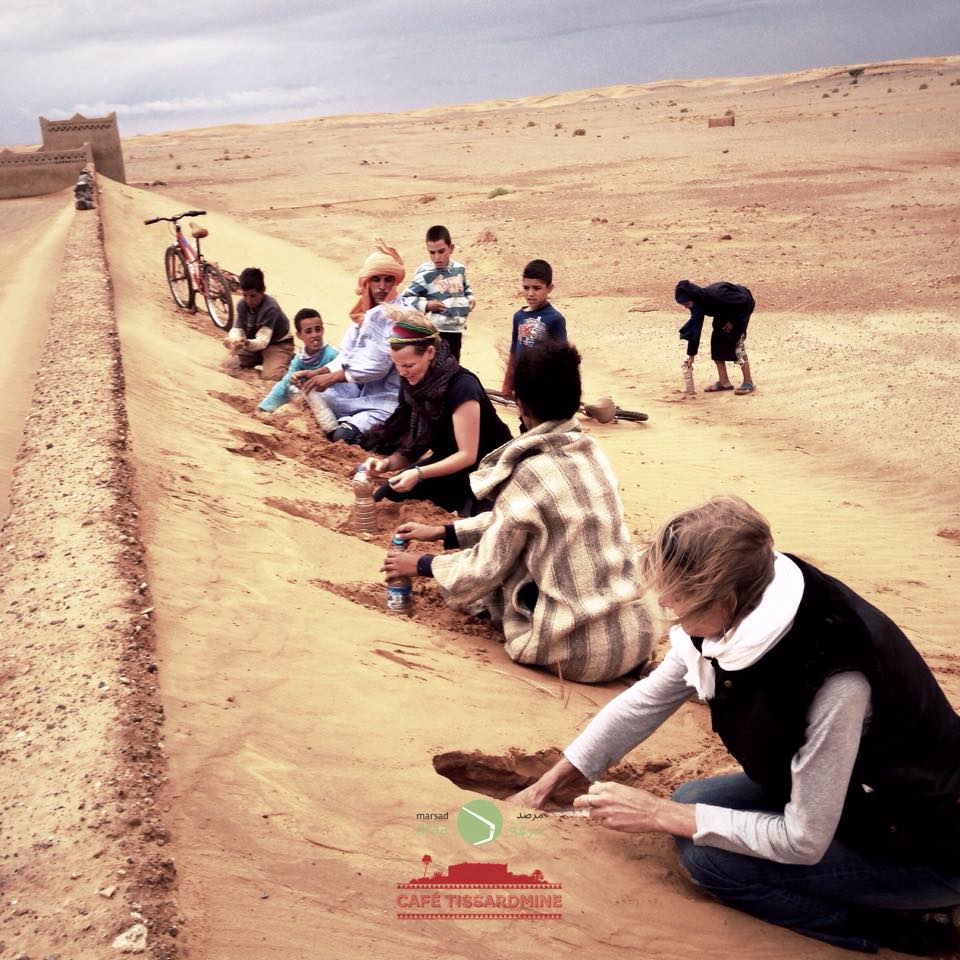
We also asked ourself, what we could do with a material that arrives to our door? We decided to try how we could built a wall recycling water bottles (a big problem in a region with so many hotels and without separated garbage collection). We decided to fill this bottles with sand. Of course the children of the village worked with us...
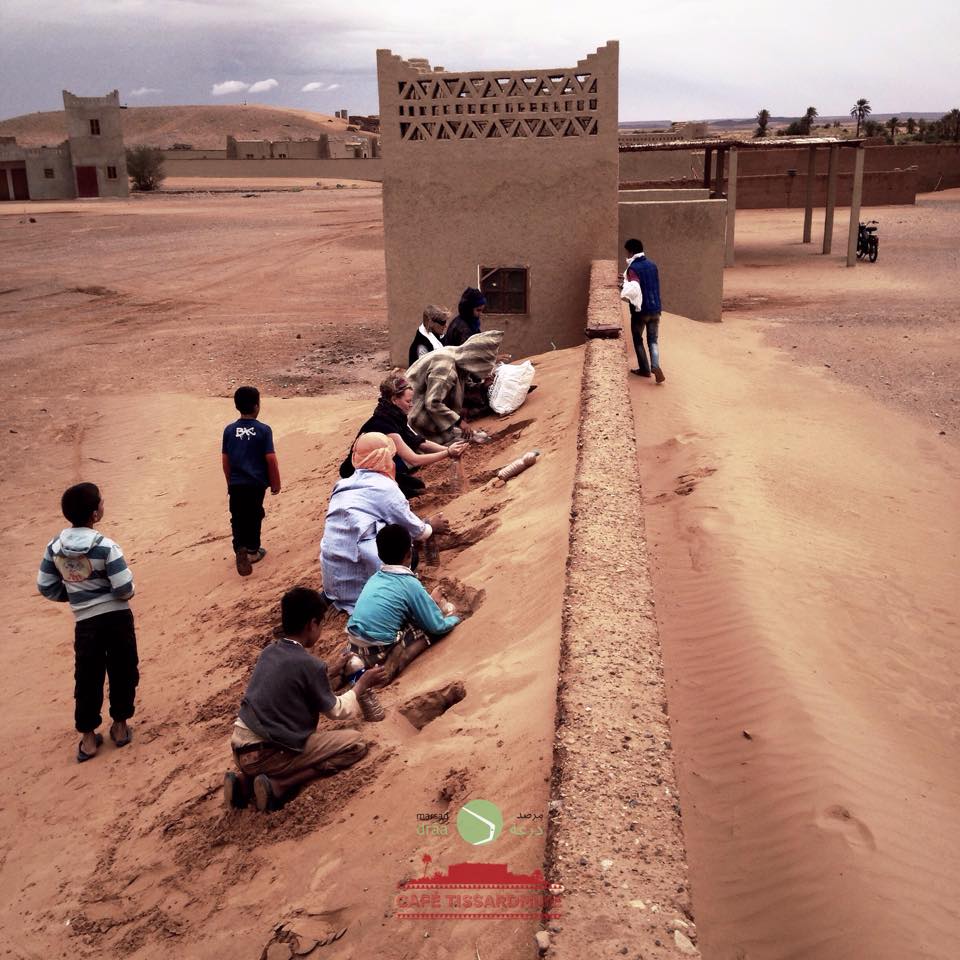
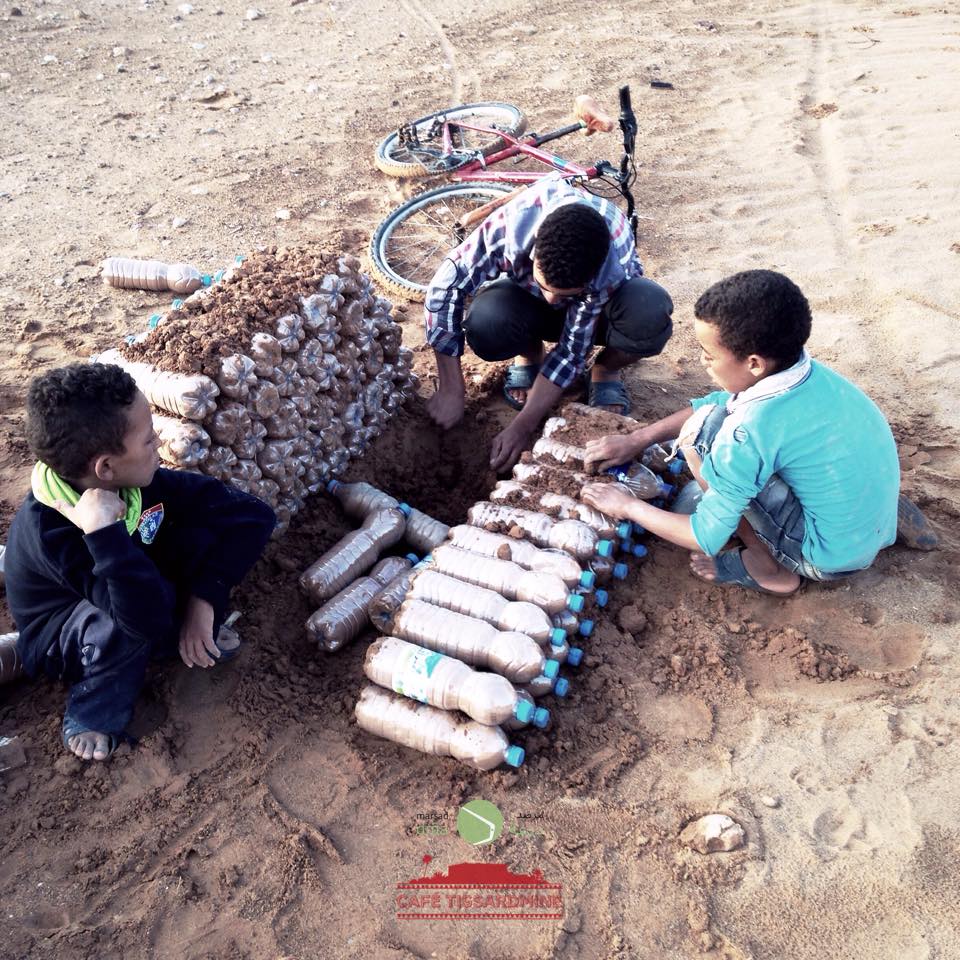
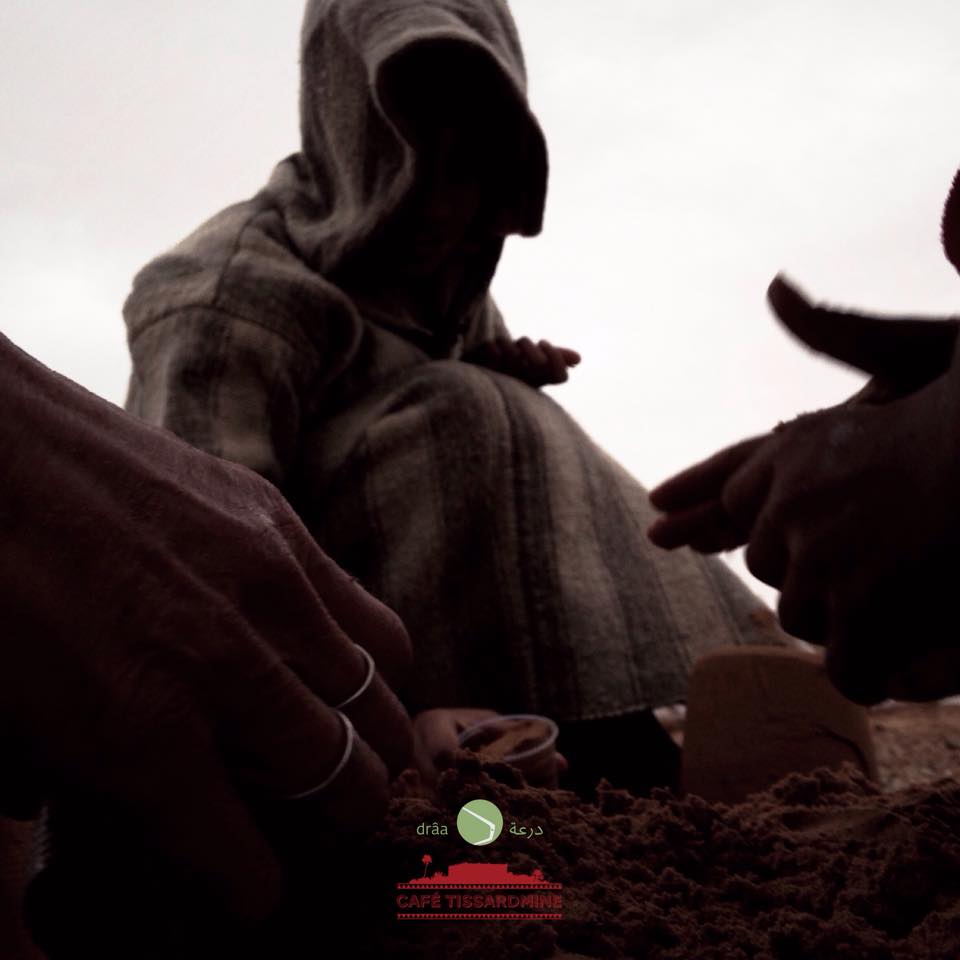
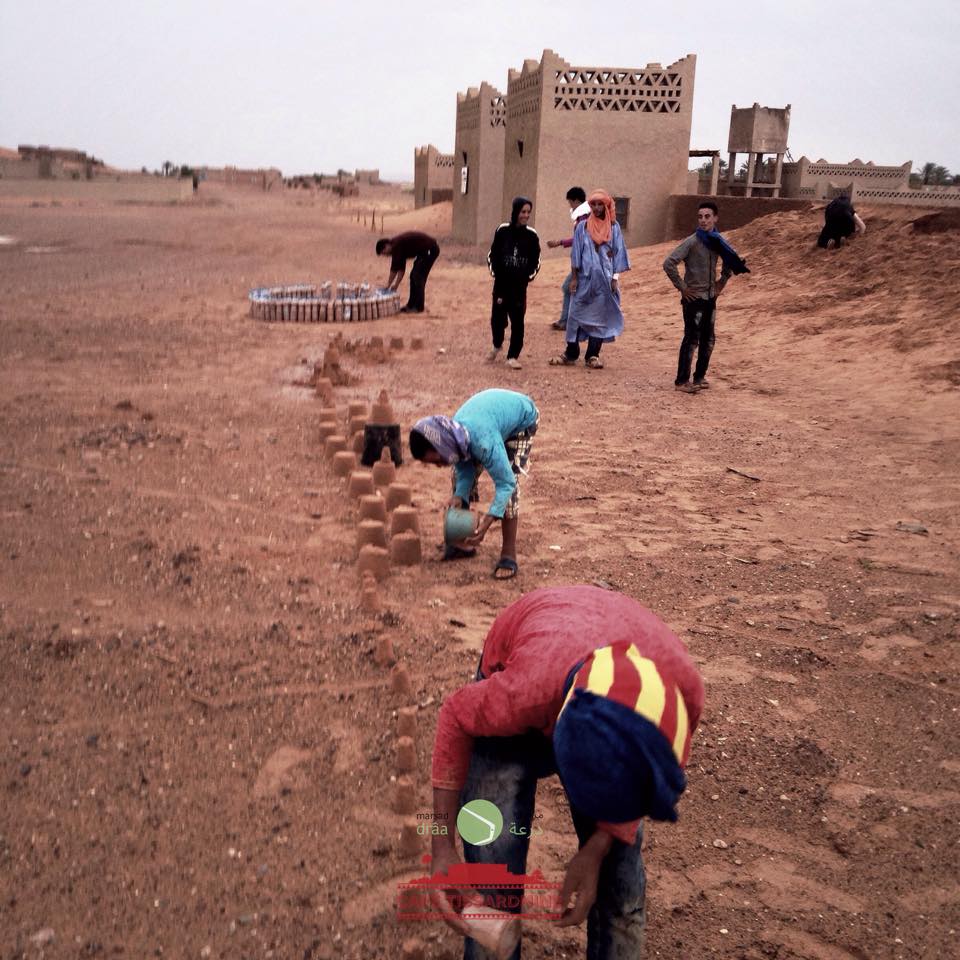
Thanks to the rain we had during three days, we took advantage of the wet sand to play with the children making sand castles.
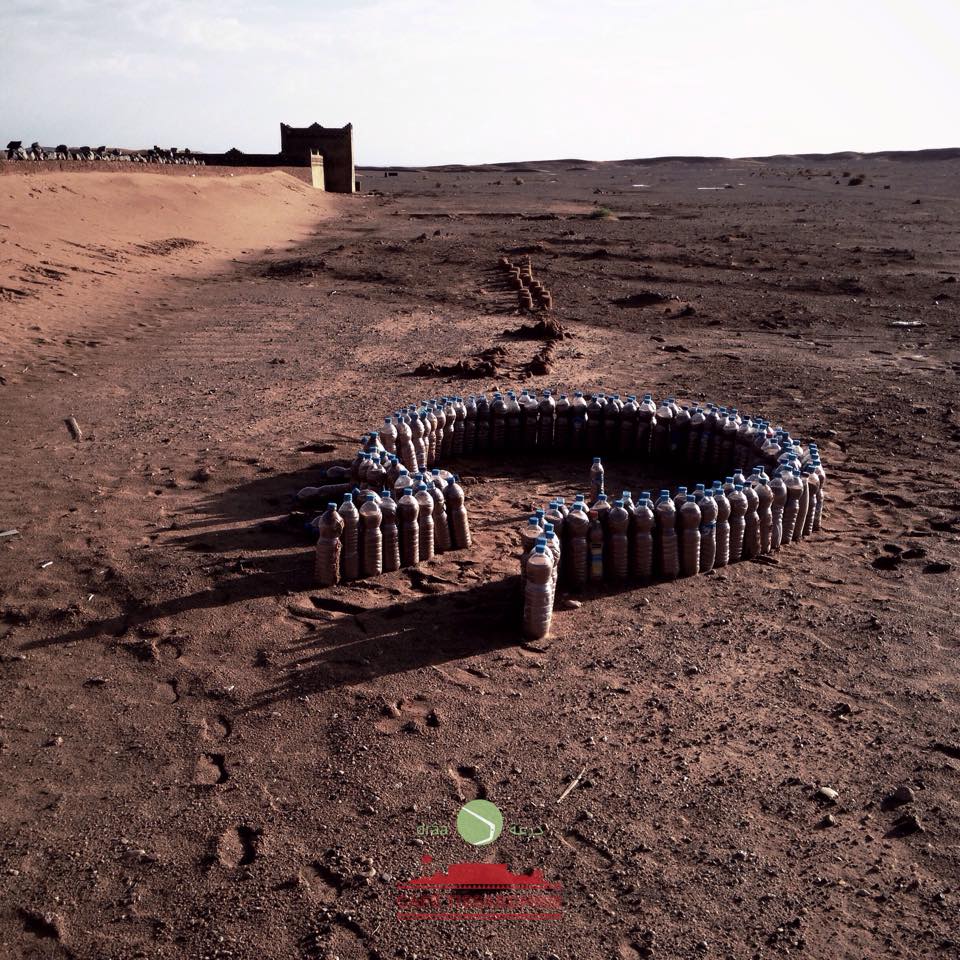
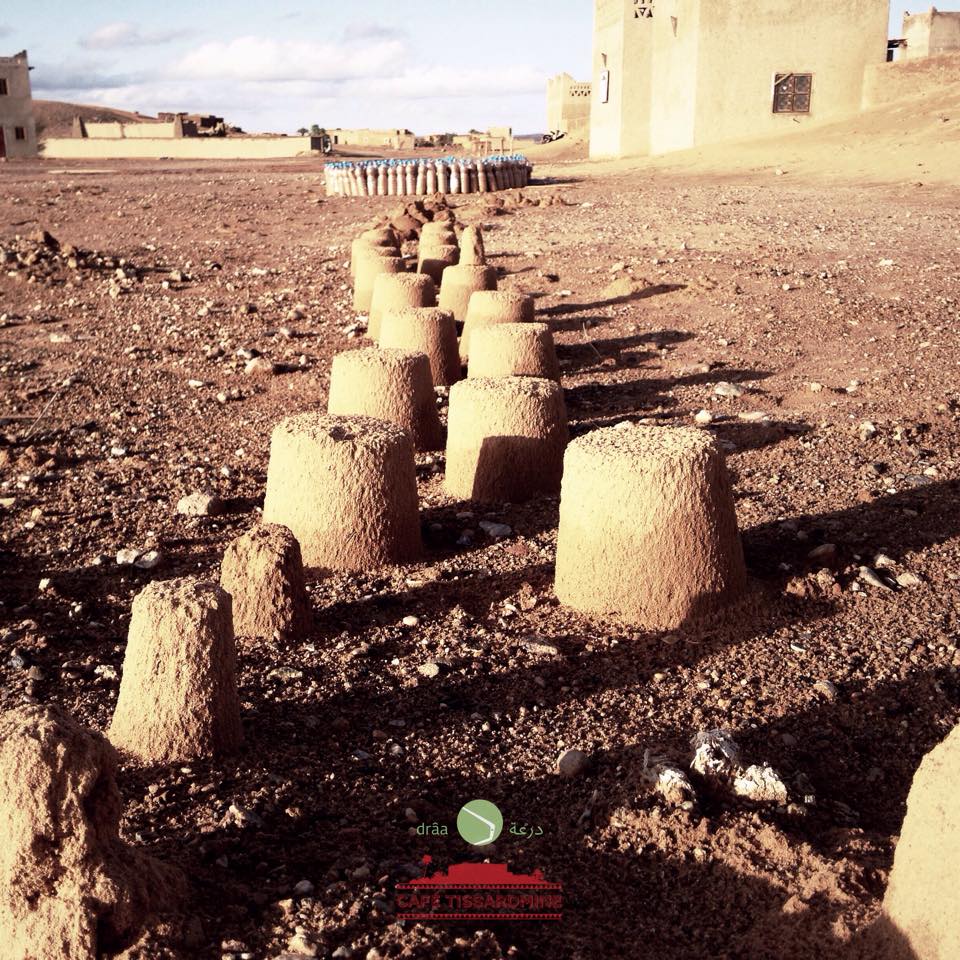
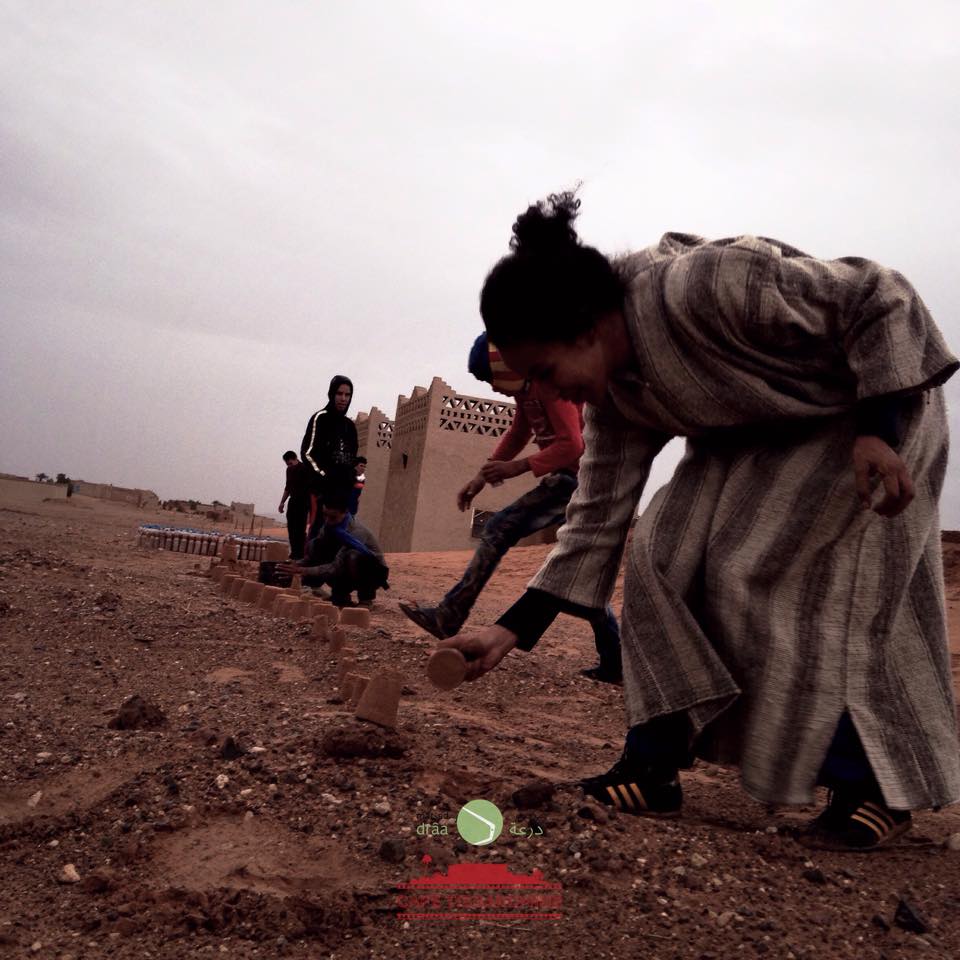
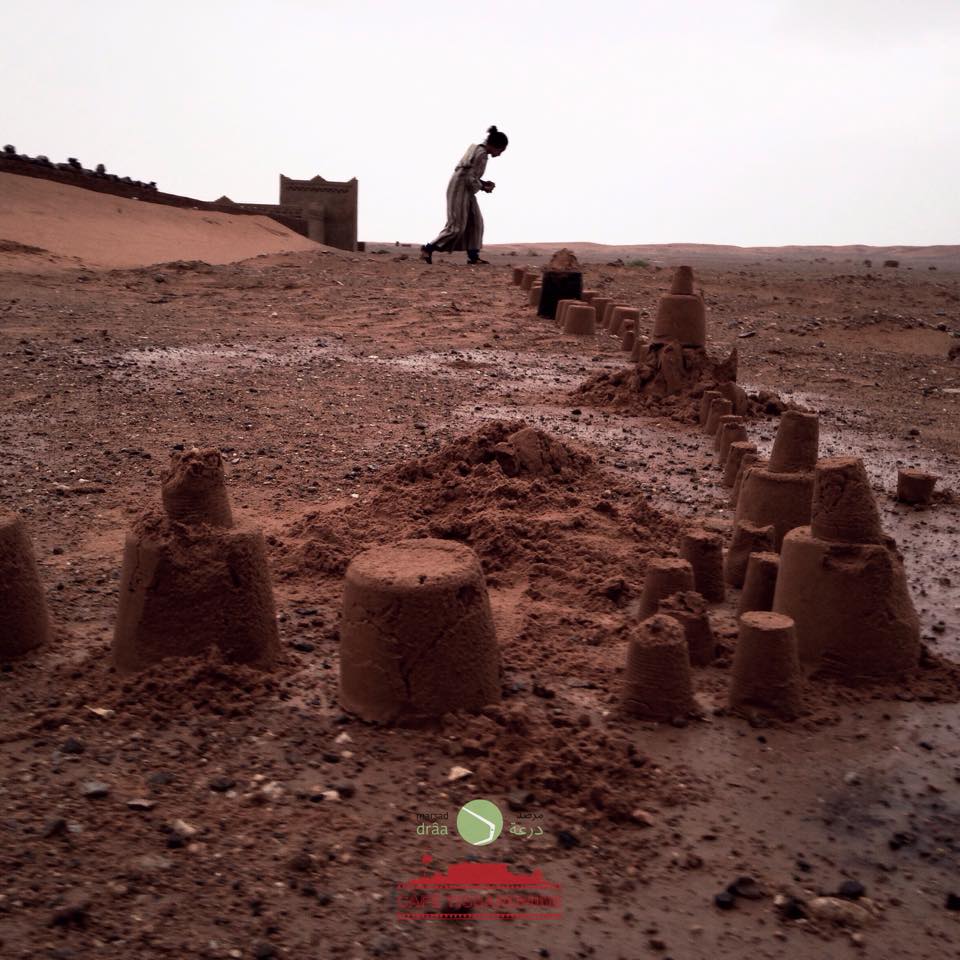

Observing the nature we have seen how some plants have an aerodynamic shape that let the sand pass through it. We asked, again, ourselves if it was not better, in some cases, to do buildings with an aerodynamic form in order to do not stop the progress of dunes...
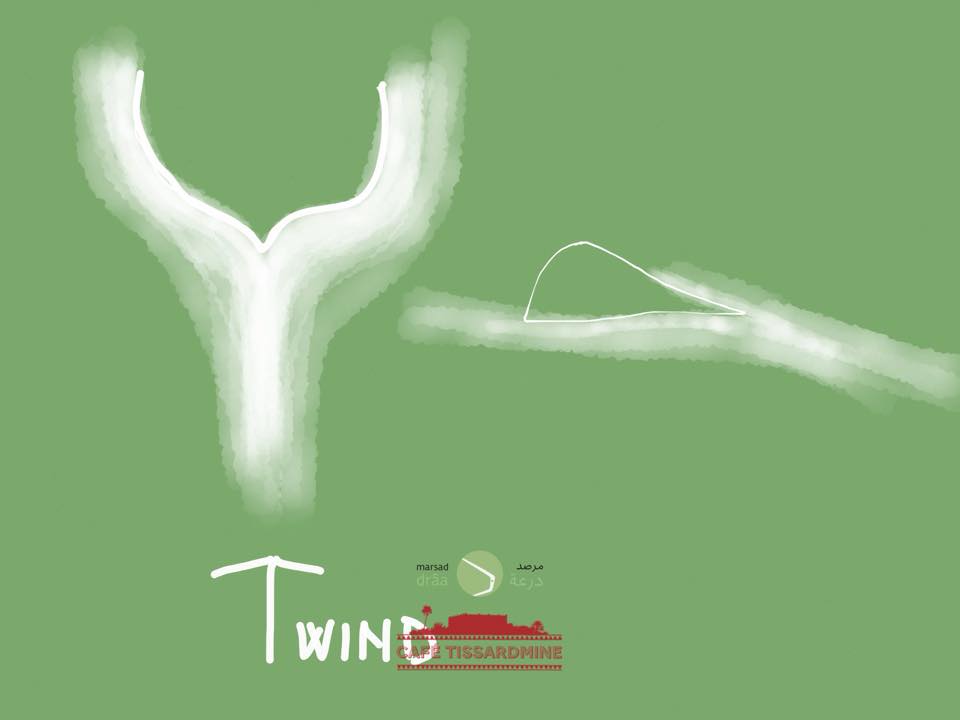
We started to think what could happen when the sand comes from one direction and which form it must have the building.
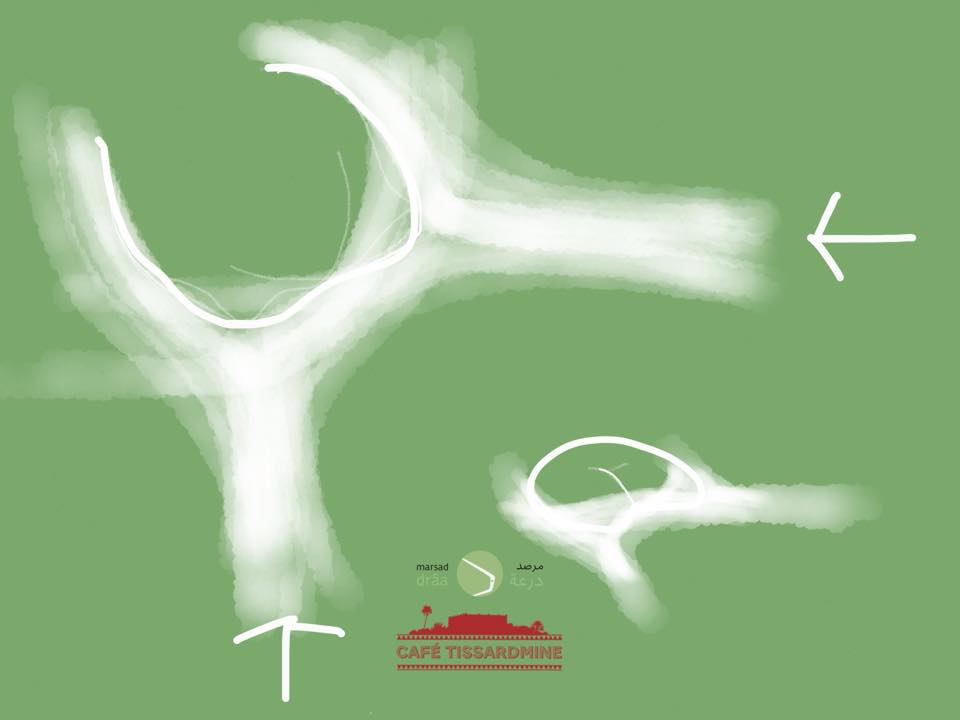
But in Tissardmine the wind has two main directions, so the form of the earth construction must be adapted to those possibilities.
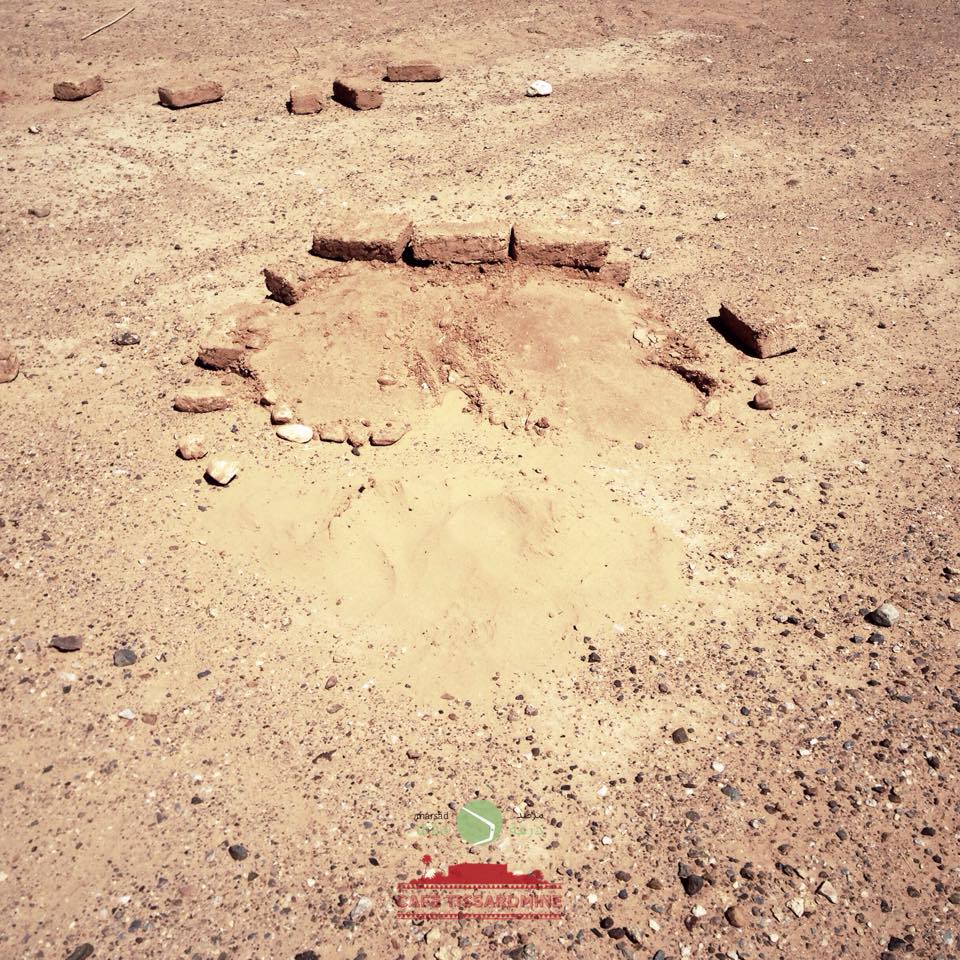
We made a model with earth and sand and we will see what happens in the next few weeks.
episode 2: earth
The earth bricks and the rammed earth walls are the elements used for building in this region. During the workshop we helped the inhabitants to build their community centre, a project we have already participated. This won't be just two rooms to make activities, for us it is also a research on windcatcher towers, in fact, we started to build one inside the building.
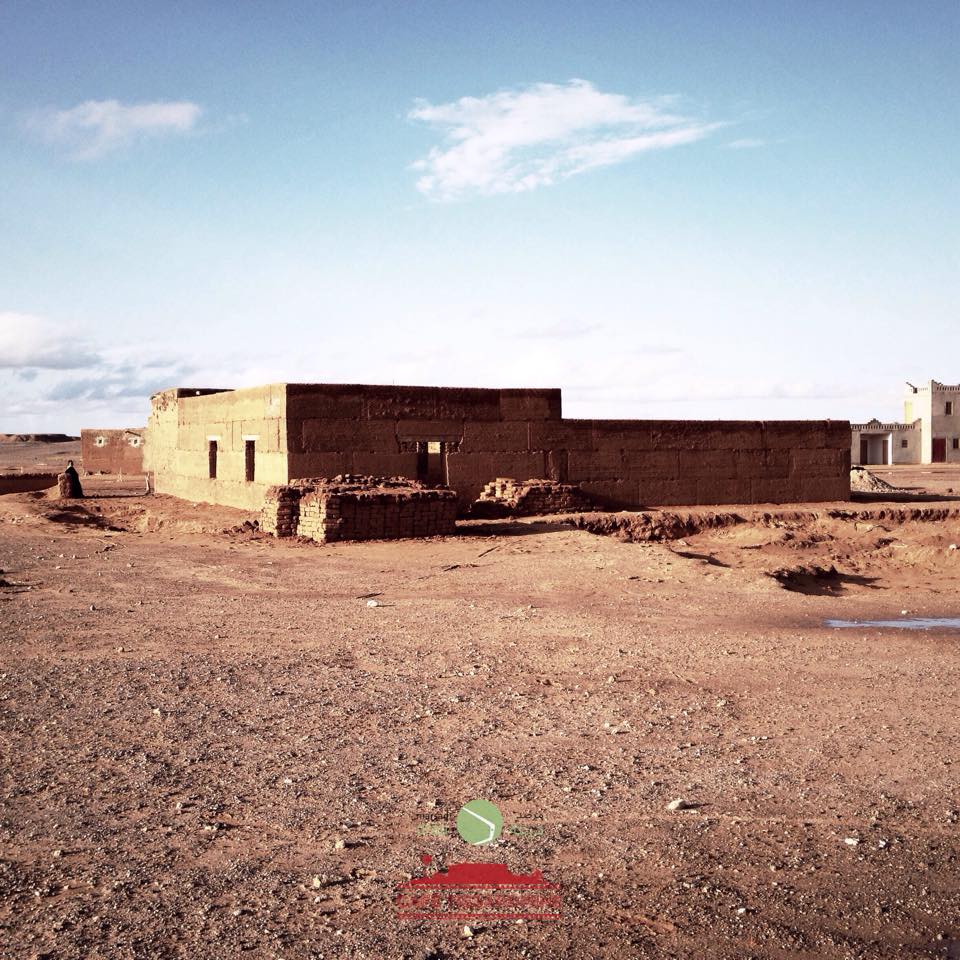
The construction of the Community Center must use materials of the plot, it means, just the earth with gravel, with no sand and no straw.
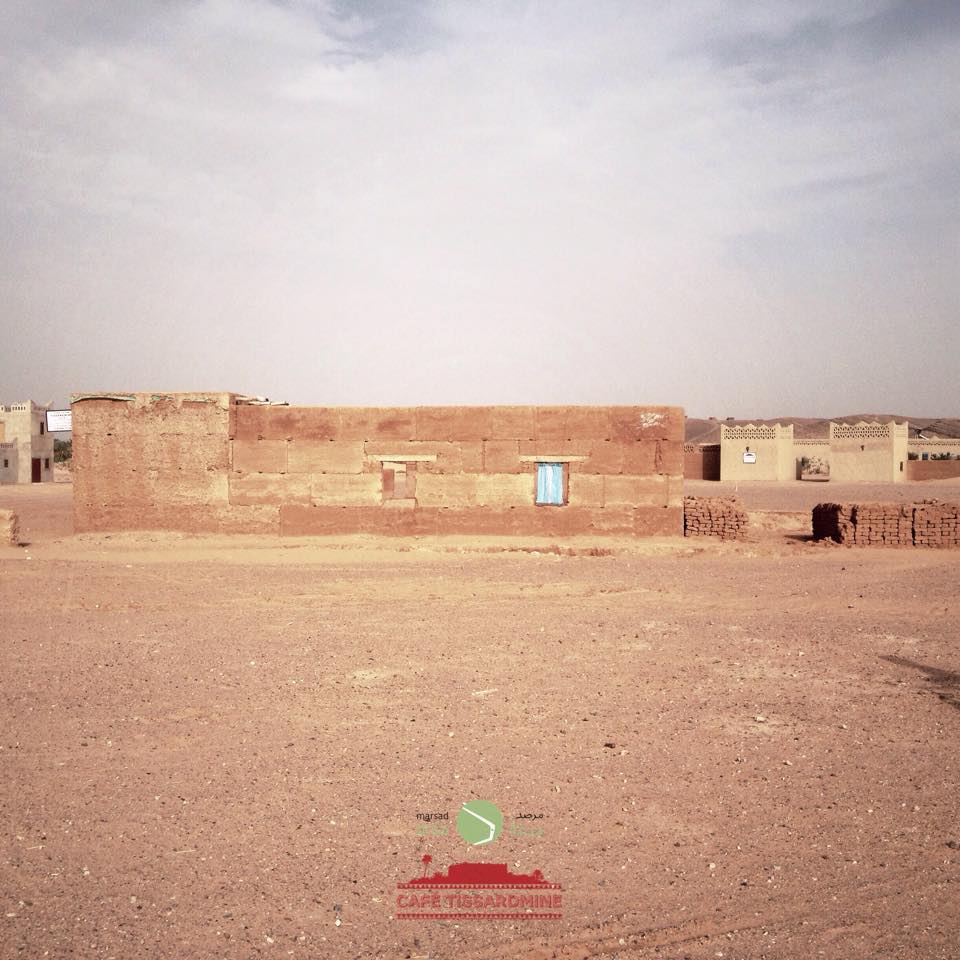
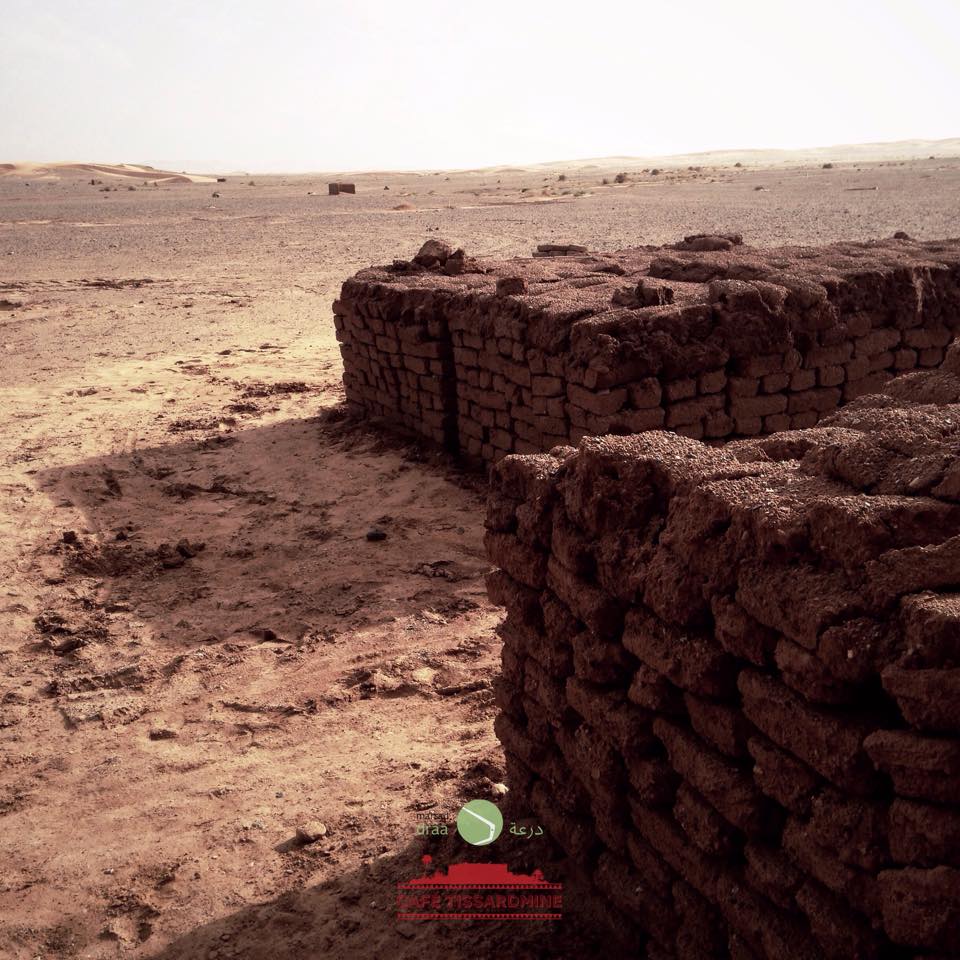

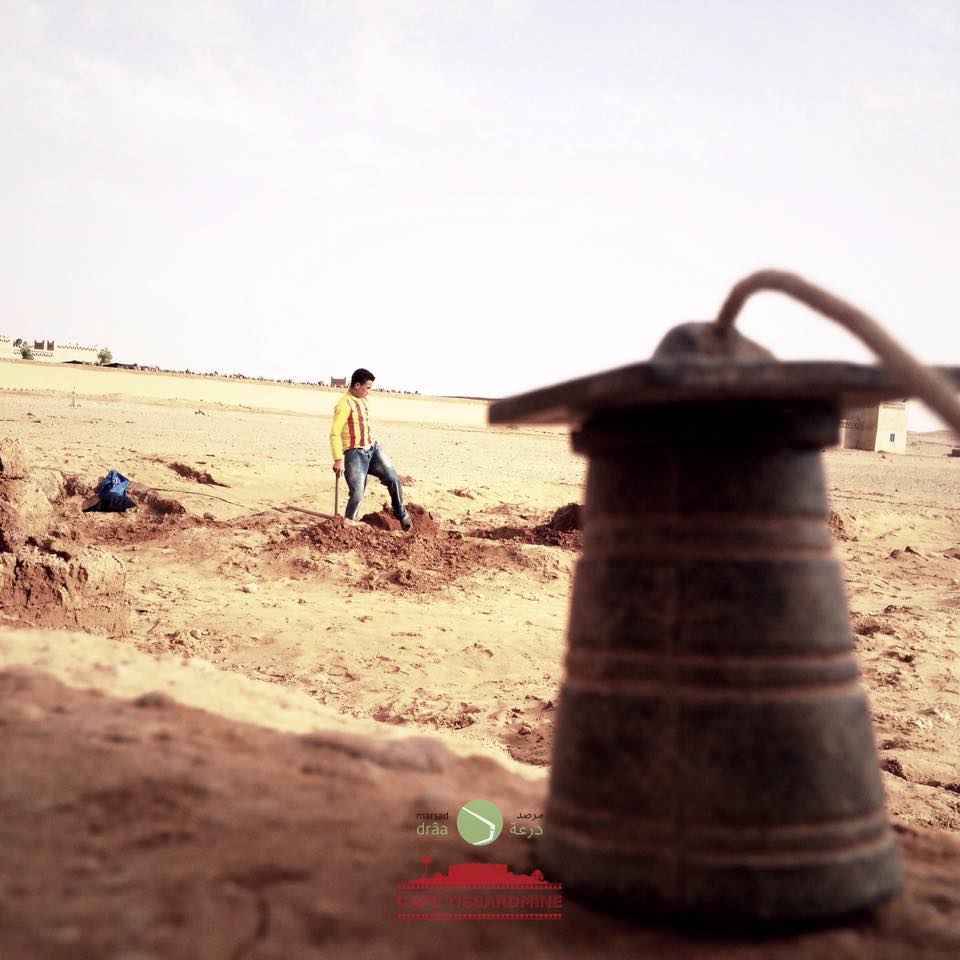

During the workshop we started the construction of the wind catcher.

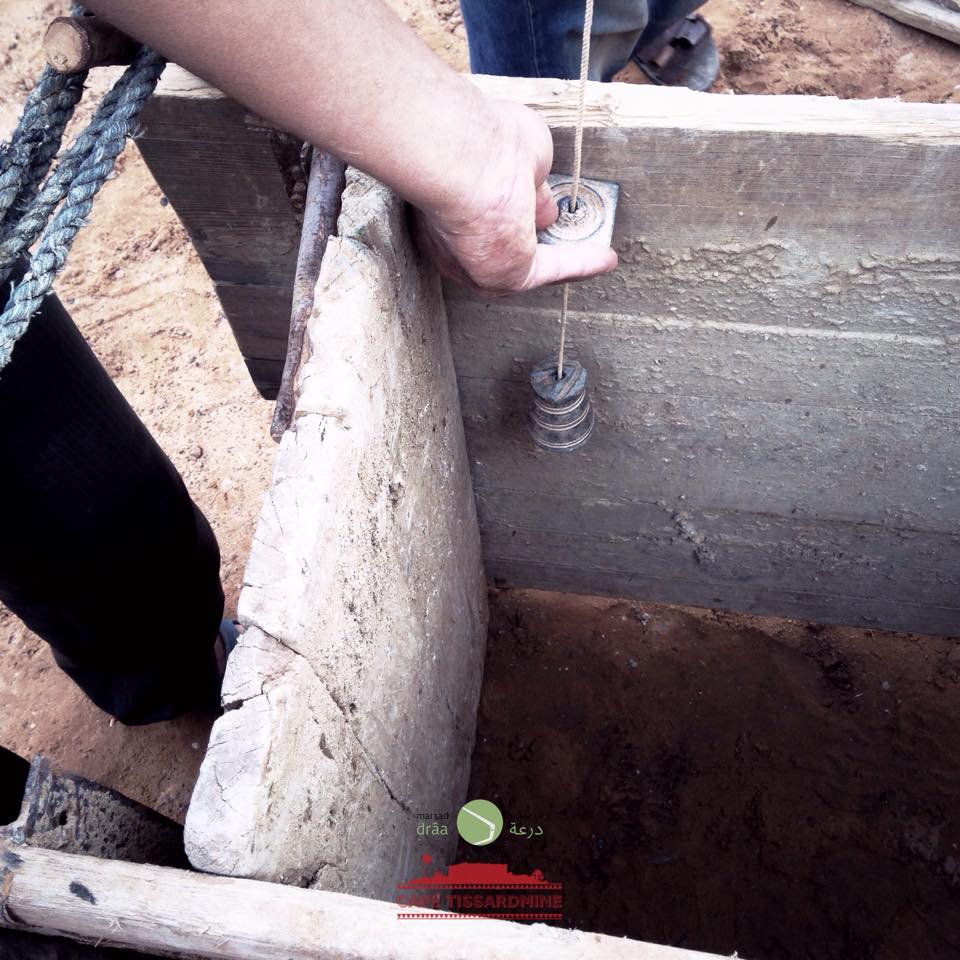
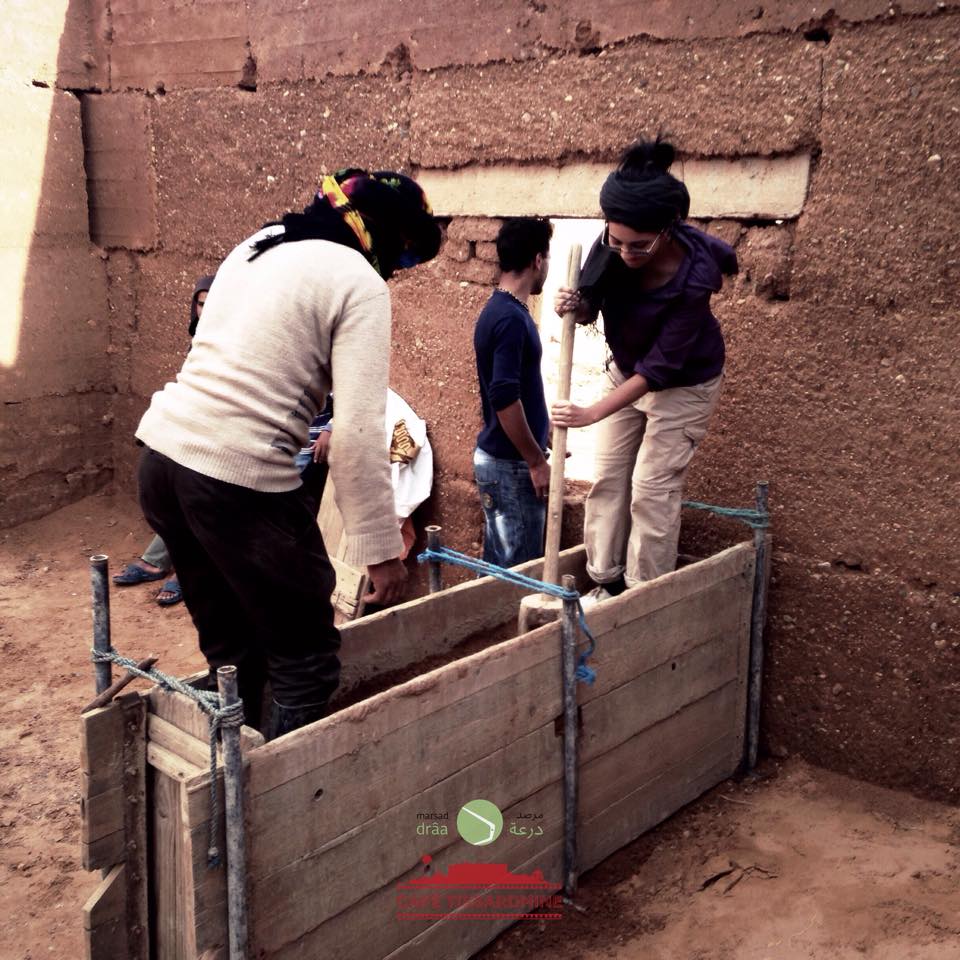

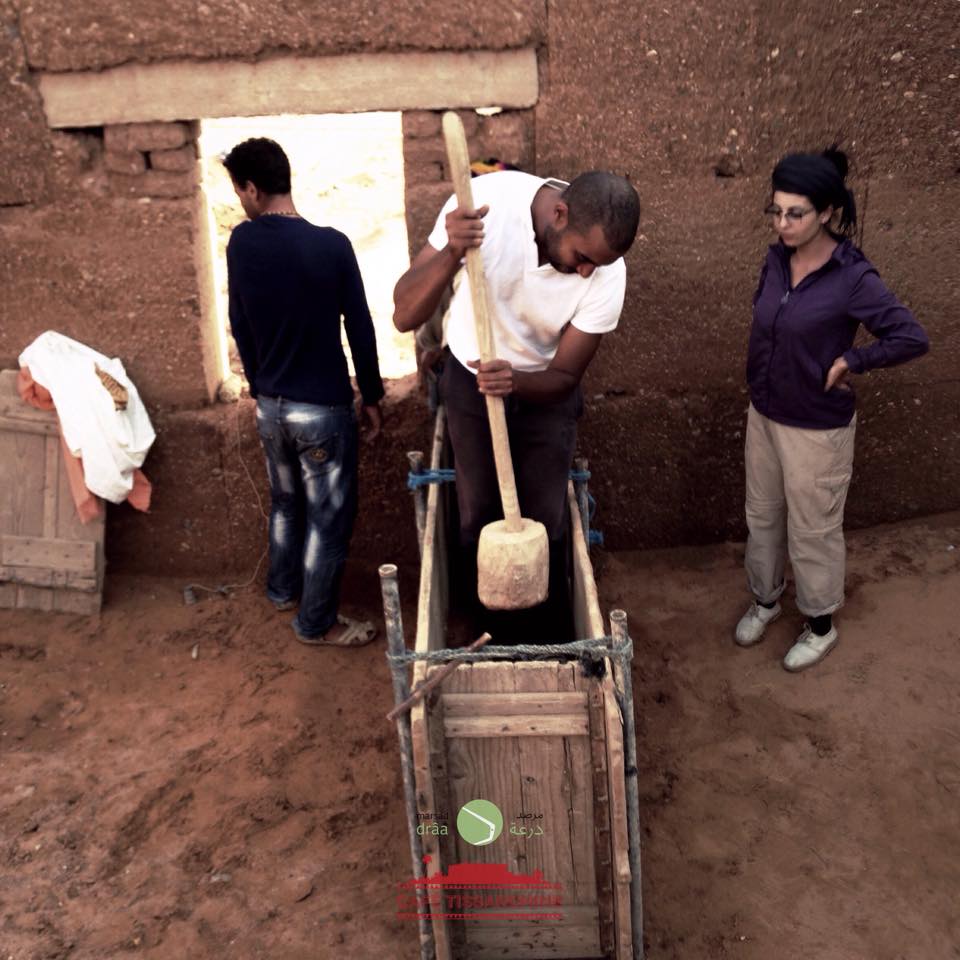
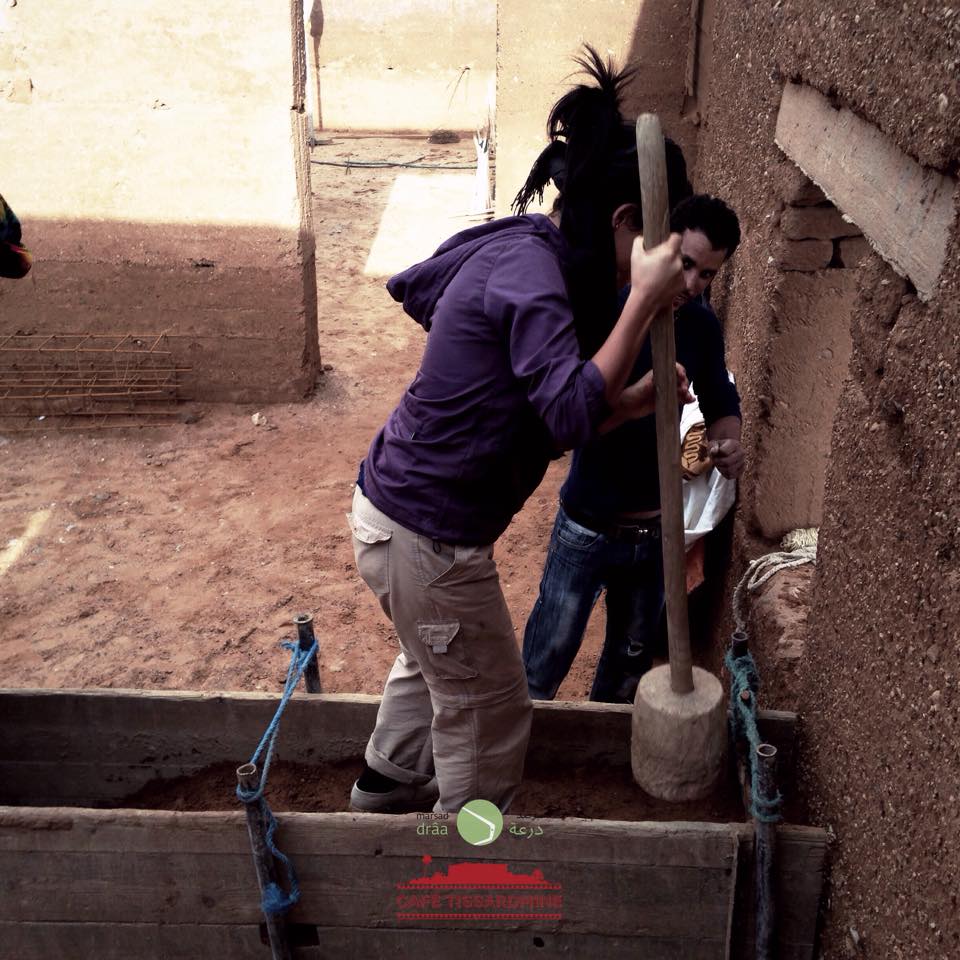


Sketch of the Community Center. This projet has been developed some weeks before the workshop with Karen Hadfield, Hind Habsaia, Hind Oudrhiri and Carlos Perez Marin. And we continue to develop it...
episode 3: landscape
Even if you think there is just one landscape in the area around Tissardmine, you can find lots of micro landscapes once you take your time to dive into the soul of this region. #desert #tissardmine #marsaddraa #workshop #landscape #dunes
episode 4: anthropology
Moroccan artist Rachid Ouhnni, studies the relation between children and "urban" spaces. In 2013 during the workshop in Tighmert (Guelmim) he worked with some children of the oasis and they showed him how they use its spaces. This time he worked again with children, but in a completely different place, with other landscapes, other tribes, other cultures... This is what the children of Tissardmine have in mind when they have to describe their village.
